What Is Link Baiting?
Link baiting is when you create a piece of content so valuable that other sites want to link to it.
Good link bait doesn’t just earn a few links here and there. It can bring in hundreds—or even thousands—of high-quality links.
Getting high-quality backlinks is a proven way to rank higher on Google. As it increases your website’s authority.
Link bait can earn you links naturally. Meaning publishers choose to link to your content—without you reaching out and asking for links.
It achieves this by being highly captivating, useful, unique, or provocative. It serves both the audience reading it and the website linking to it. Link bait can take on many forms, including as a:
- Research study
- How-to guide
- Opinion piece
- Infographic
- On-site tool
But that’s just to name a few (we’ll share more examples of link bait later).
One of the major appeals of link baiting in SEO is that it’s a scalable solution. Some other link building strategies, like answering HAROs or broken link building, depend on opportunities being available. And you reaching out directly to publishers.
Link baiting can produce exponential returns on a single piece of content by being shared and linked to over and over again.
Is Link Bait Important for SEO?
Using link bait to get quality links to your website is a great way to supercharge your SEO efforts. Links continue to be one of Google’s core ranking factors, with the company saying:
…one of several factors we use to help determine [quality of content] is understanding if other prominent websites link or refer to the content. This has often proven to be a good sign that the information is well trusted.
The backlinks your website gets help determine its authority. Authority is how reputable your site is within your niche.
Link bait can earn tons of links from high-authority websites related to yours, making it a powerful tool for increasing your website’s authority. And ability to rank on Google.
6 Link Bait Examples: Successful Real-World Campaigns
We analyzed six successful link bait campaigns using Semrush’s Backlink Analytics tool. Here’s what we found.
1. Semrush’s Most Visited Website Study

Semrush’s Top 100: The Most Visited Websites in the US report analyzes popular sites by industry.
Studies, surveys, and statistics are link bait fuel.
Why?
Because they satisfy users’ curiosity. They give publishers a citation to reference. And they present an interesting insight that people may be compelled to share.
This link bait study has earned 8k backlinks from over 1k referring domains.

Note: This study is constantly being updated, giving it ongoing link-earning potential.
2. IDRlabs’ Food Disgust Test
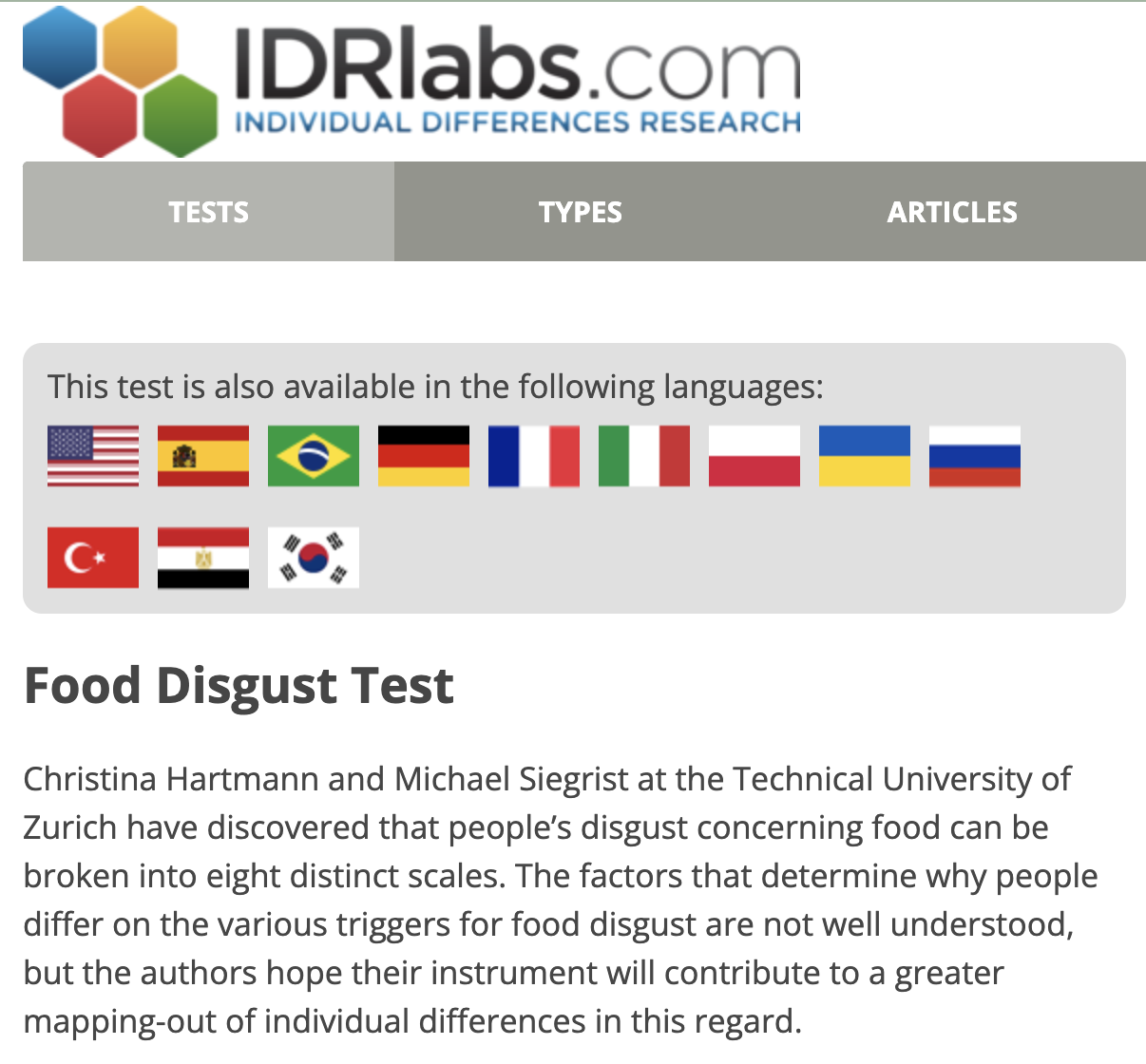
IDRlabs’ Food Disgust Test asks the user to rank their level of agreement with 32 statements about food scenarios. At the end, it shows a breakdown of which food triggers the user is most sensitive to.
Tests and quizzes make powerful link bait for a few reasons:
- They’re fun
- People are introspective creatures and want to learn about themselves
- People want to share their results
- Publishers can’t really reference the test without linking to it. It’s something people need to try themselves to understand.
This link bait test has earned 4k backlinks from over 300 referring domains.

3. The Points Guy’s Monthly Valuations

In this monthly breakdown, The Points Guy lists how much a single point or mile is worth for various credit cards and loyalty programs.
What makes this link bait so effective is that it solves a pain point for users. The page cleanly presents information that people regularly need but probably have trouble finding on their own.
Plus, it saves publishers having to link to multiple sources to share a wide range of information with their audience.
Like the Semrush study, this page is frequently updated, making it an evergreen piece of link bait.
This link bait breakdown has earned over 65k backlinks from 2.4k referring domains.

4. JustPark’s Emergency Stop Game
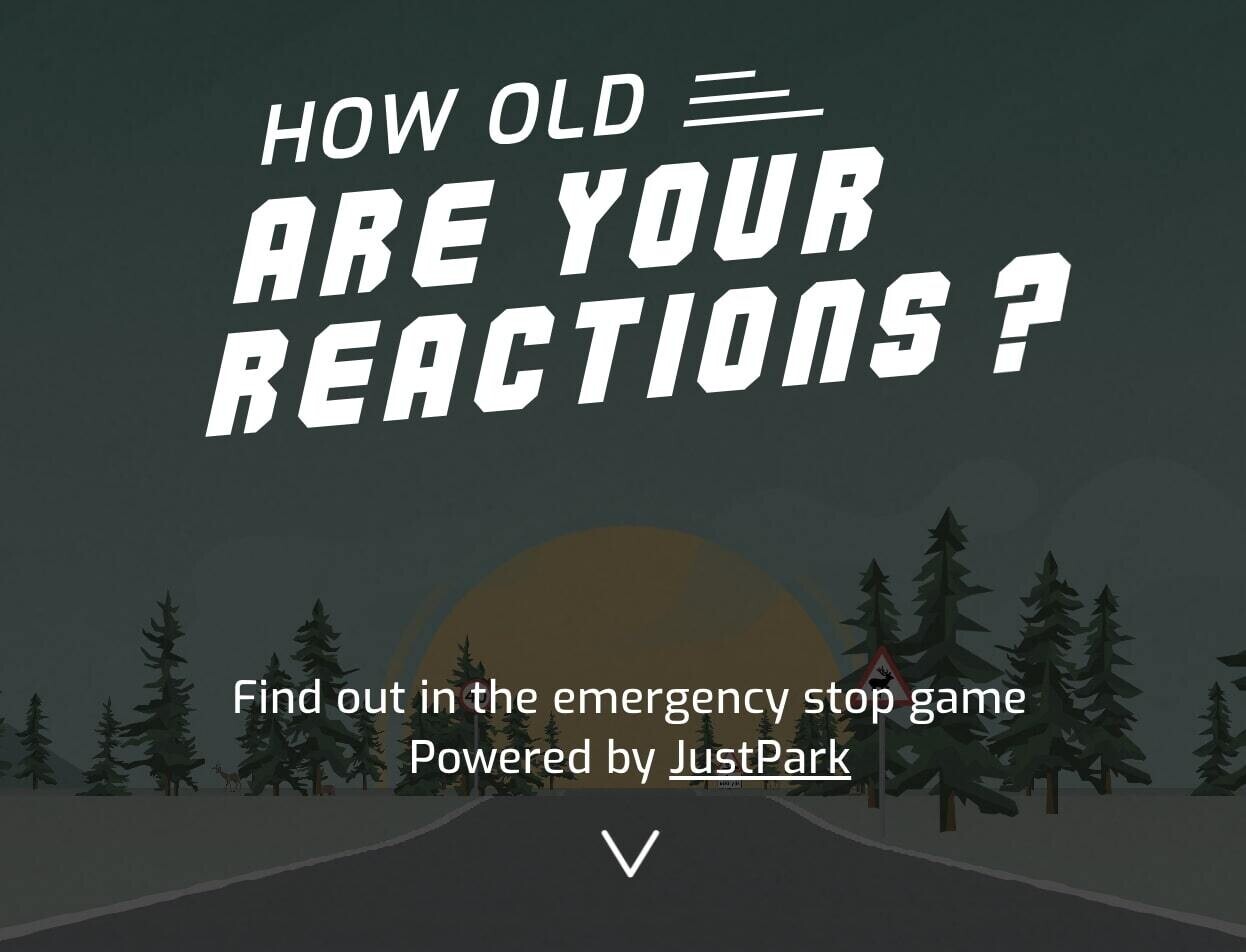
This JustPark reaction time test is formatted as a simple game. Just press a key to stop the virtual car when you see the stop signal. Then you’ll learn “how old” your reaction time is.
Games like this act similarly to tests and quizzes. They’re fun, shareable, and informative.
But this one enjoys one added bait factor:
It’s a challenge.
You go into the game convinced it’s a piece of cake. Then…GASP. Your results tacked seven years onto your age!
Not only is this enlightening, but it triggers an emotional response. Now you’re riled up and can’t wait to see how your friends’ reaction times compare. So you share the game online. Thus, the game gets linked to over and over again. And catches the eyes of other websites and journalists.
This link bait game has earned over 6k backlinks from over 800 referring domains.

5. 99designs’ Fundamentals of Color Theory
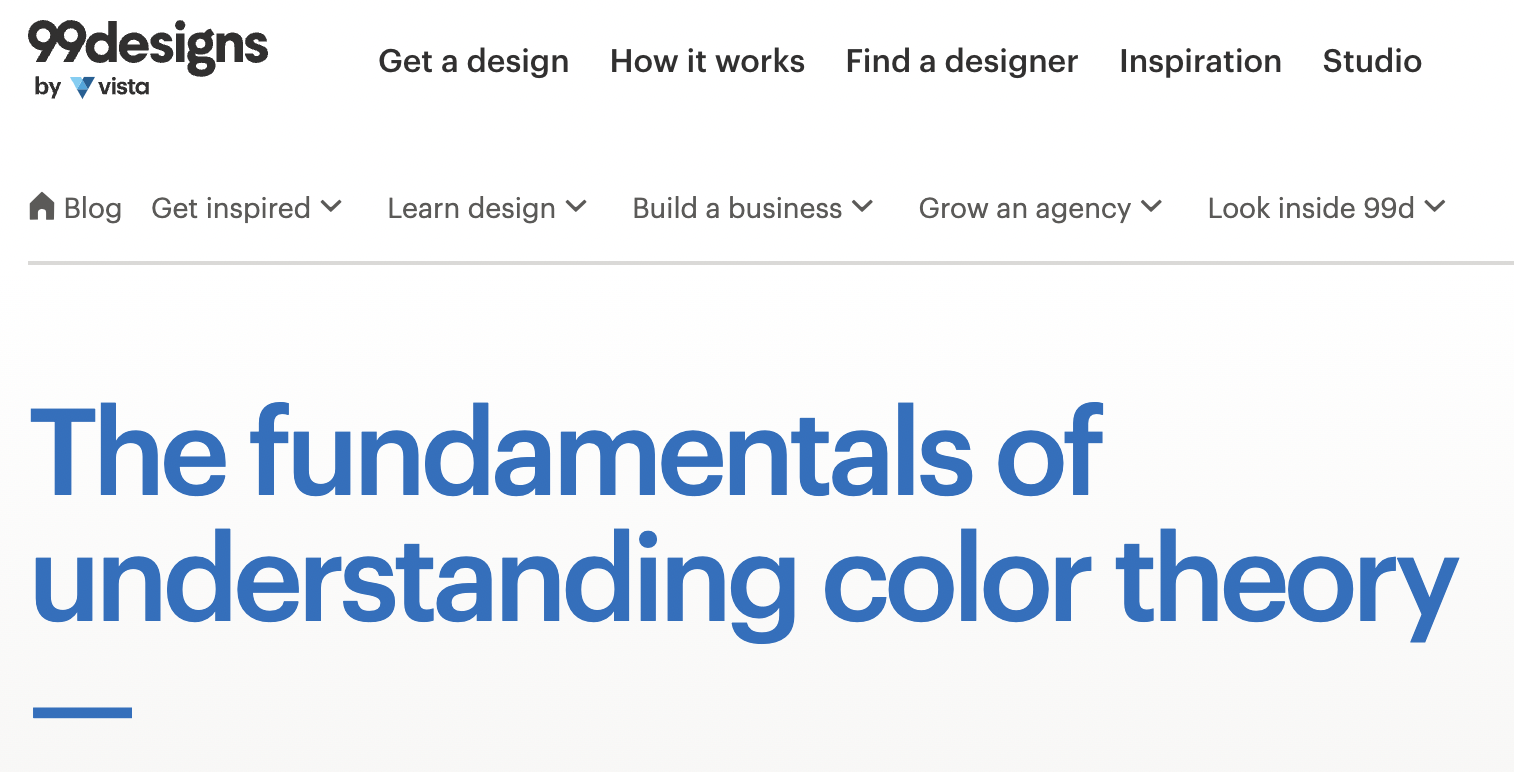
99designs’ comprehensive guide to color theory has all the markings of a great piece of informational content:
- Thorough
- Well organized
- Easy to understand
- Includes examples
But what makes it so linkable is its use of visuals.
Concepts are illustrated with simple but eye-catching graphics. Like this one:
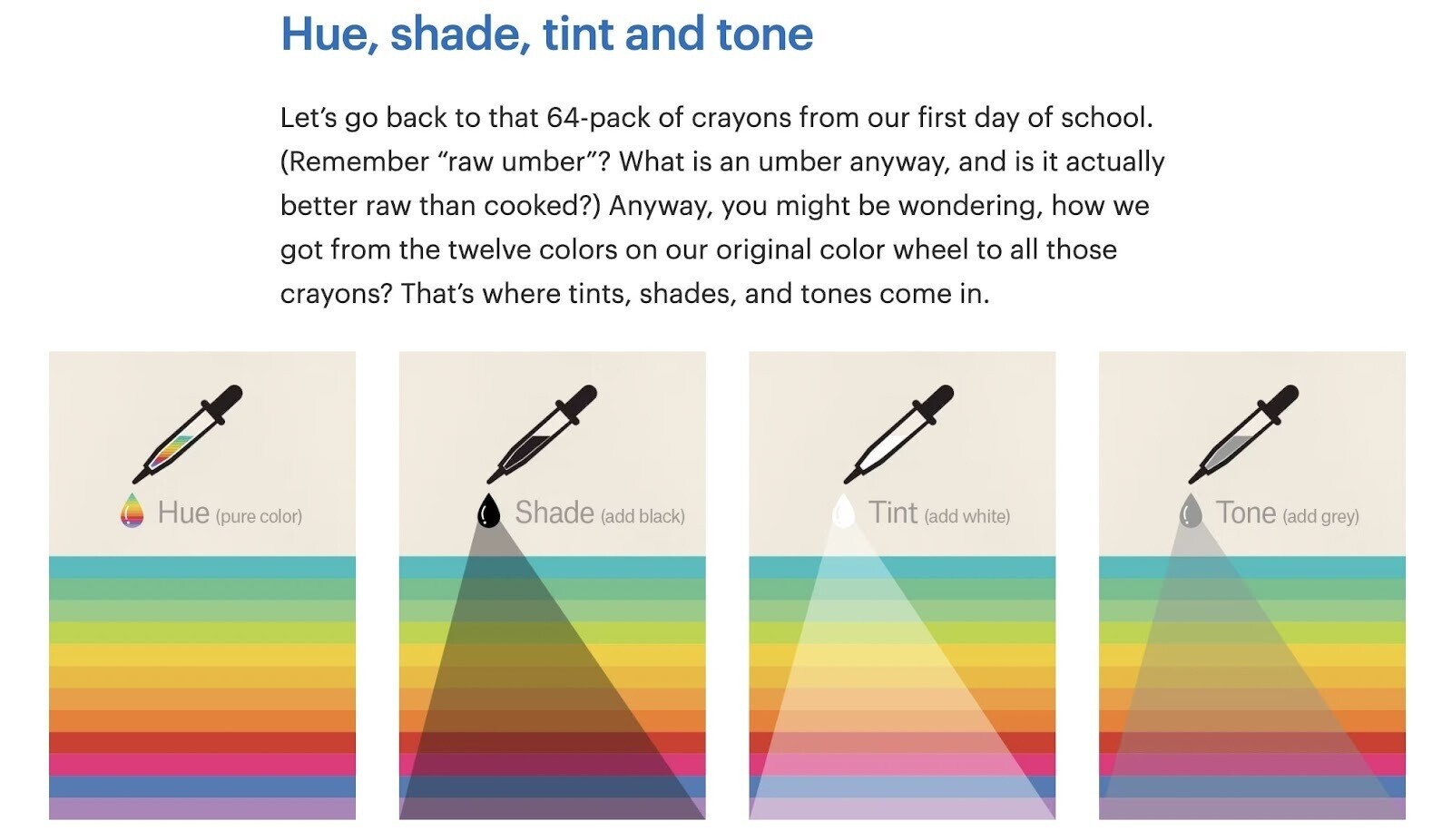
Visual breakdowns help readers understand a concept. Coupling visuals with a comprehensive explanation of color theory makes this one of the best resources on the subject out there.
So a publisher who wants to reference the theory, without covering it in depth, can link to this article to provide their audience with a top-notch resource on the subject.
This link bait guide has earned 3.5k backlinks from over 750 referring domains.

6. Pomofocus’s Pomodoro Timer
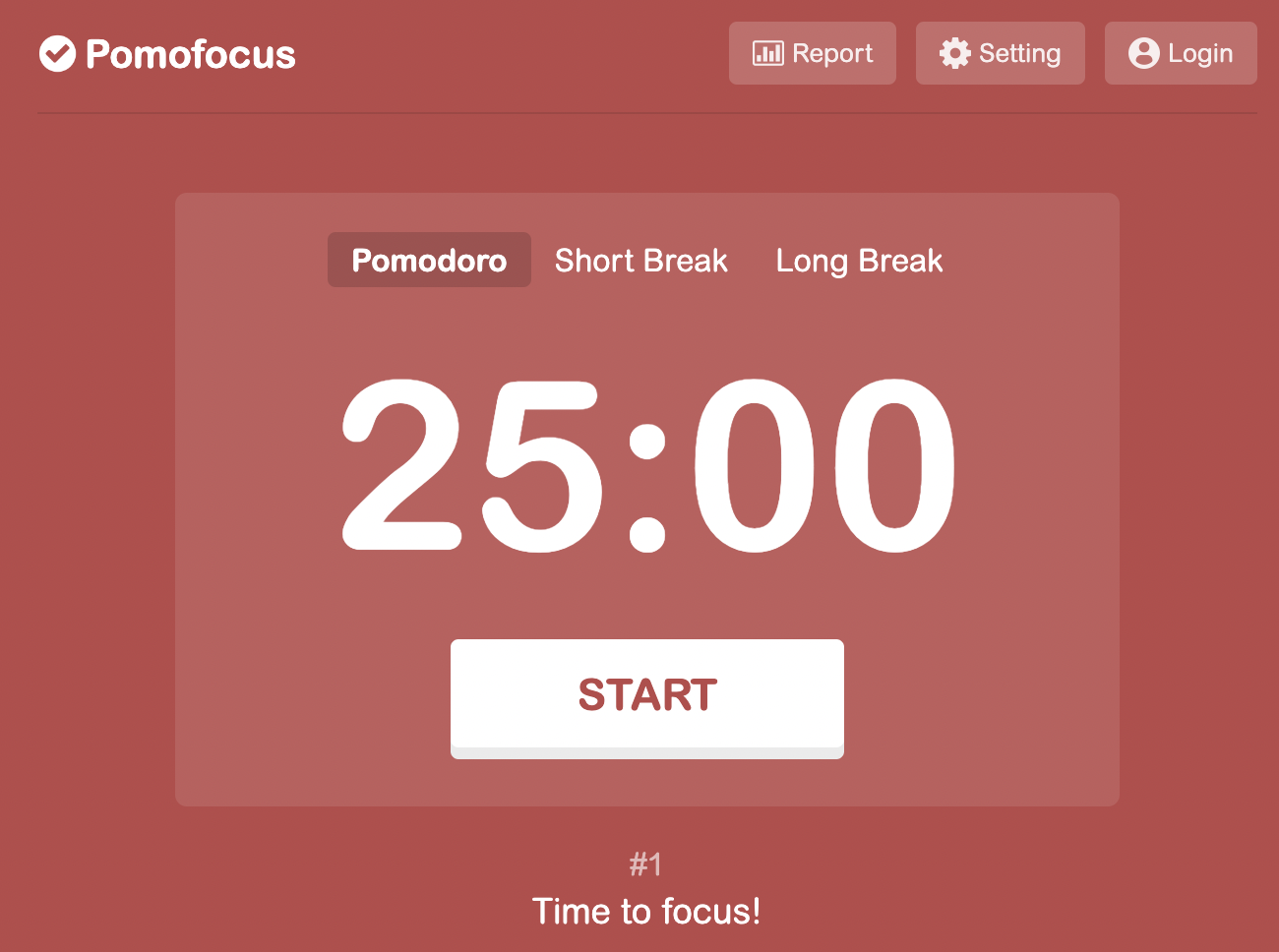
Pomofocus’s Pomodoro Timer tool is simple—just hit start to activate a 25-minute timer. The goal is to be productive during this time.
Then, the alarm sounds and you’re presented with a five- or 15-minute timer for your break.
That’s right. It’s just a set of timers.
But it’s incredibly effective.
This tool succeeds by implementing a few techniques. It:
- Satisfies a unique need: Any timer can be set for five, 15, or 25 minutes. But this timer is framed as the solution to productivity woes. Given its targeting, people believe this—rather than their phone’s built-in alarm clock or kitchen timer—is the best way to solve their specific problem.
- Is topical: Conversations about mental fatigue, concentration disorders, and burnout are at the forefront of pop discourse. This tool takes advantage of the pomodoro method, a popular time management technique, that has quickly gained a massive following. While Pomofocus jumped on a *** topic, the tool is still perpetually useful, even when the pomodoro buzz dies down.
- Appeals to a wide audience: Who doesn’t need help buckling down and doing their work? Homework? Chores? This tool can be used by nearly anyone, but it still operates within the site’s unique niche.
- Is more engaging than a normal alarm: The page is simple, but it’s expertly designed. Everything from the layout to the font is aesthetically pleasing and modern. It even uses different colors for each timer and issues a satisfying sound when you start the clock. All of this combines to make users feel they’re getting a sophisticated tool.
Publishers can confidently link to tools that are useful, engaging, and topical.
Ones like the Pomodoro timer also have mass appeal. Meaning a tool like this can earn links from a wide range of reputable websites—not just ones within your niche.
This link bait tool has earned over 525k backlinks from 4.6k referring domains.

Tip: Find trending topics in your niche with Semrush’s Topic Research tool.
How to Create Link Bait
Link bait relies on two things to be successful:
- It draws the interest of your target audience
- It draws the interest of relevant publishers
What interests audiences and publishers can vary by industry, time, and location.
Not every piece of link bait will possess all of the following qualities. But most will check at least a few of these boxes:
- Appeal to a wide range of people. So they can earn links from different publications.
- Can be confidently cited by a publisher to back up stats, quotes, or comments. Or to further explain an idea.
- Elicit an emotional response from the audience
- Solve problems or answer questions
- Are unique. Successful link bait takes an unorthodox approach, presents a fresh angle, or is the best of its kind.
- They’re topical. They may even be controversial or respond to a *** topic in current media coverage.
- They’re executed in a way that linking to the content makes sense. Or is even needed in order to add value to an article. For example, it’s something the publisher is directly referencing. Like a survey, statistic, infographic, or game.
Here are some techniques you can use to create link bait content. Plus link bait ideas for each technique.
Create Something Useful for Users
Offer the perfect solution to a pain point for users. It can be informative, instructive, or usable.
Here are some examples.
How-to Guides
How-to guides walk readers through a process using actionable advice.
Write an easy-to-follow instructional guide on a process.
For example: How to Get Backlinks: 10 Strategies That Work

Bonus points if you take a unique approach, like negative framing (e.g., “How Not to Do SEO”).
Or addressing a very niche topic.
The key to creating a link-bait how-to guide is making it either original or exceptional. Ideally, both.
Guides and tutorials are everywhere. To stand out, tackle a less-covered topic and add unique insights, tips, and examples to your content.
Or make sure your guide is the best one out there. Making you the de facto resource for others to link to on the subject.
Comprehensive Guides
Create the definitive resource on a subject by explaining the subject from A to Z.
For example: The Complete Guide to Website Sitemaps

Being the expert on a subject will make publishers want to link to you. Because you can provide their readers with the best resource. And save the writer the trouble of explaining a complex idea within their work.
Guides can also be great for SEO—beyond bringing in links.
They give you a chance to establish yourself as a subject-matter authority.
They allow you to hit more keywords. Including long-tail keywords, which are highly specific search terms with lower volumes.
For example, if you’re writing about how to clean cast iron cookware, creating a comprehensive guide allows you to hit long-tail keywords like “how to clean cast iron with salt” and “how to clean enamel cast iron.”

Tip: Use Semrush’s Keyword Magic Tool to find relevant keywords for your guides. Then, use the SEO Content Template to create an optimized brief.
Tools
Tools, templates, calculators, and estimators all solve unique problems for the user. So publishers can offer them to users through links. And users can offer them to one another through social shares.
Tools also give you an opportunity to corner the market. Especially if it uses proprietary information. That means your tool can’t be replicated. And you’ll be the leading choice for anyone who wants to link to such a resource.
You can solve a problem for the user with a free tool, like a generator.
Or give users a template that they can download and customize to meet their needs. You can even offer a collection of templates.
For example: 9 Marketing Report Templates & Examples for SEO, SEM & More
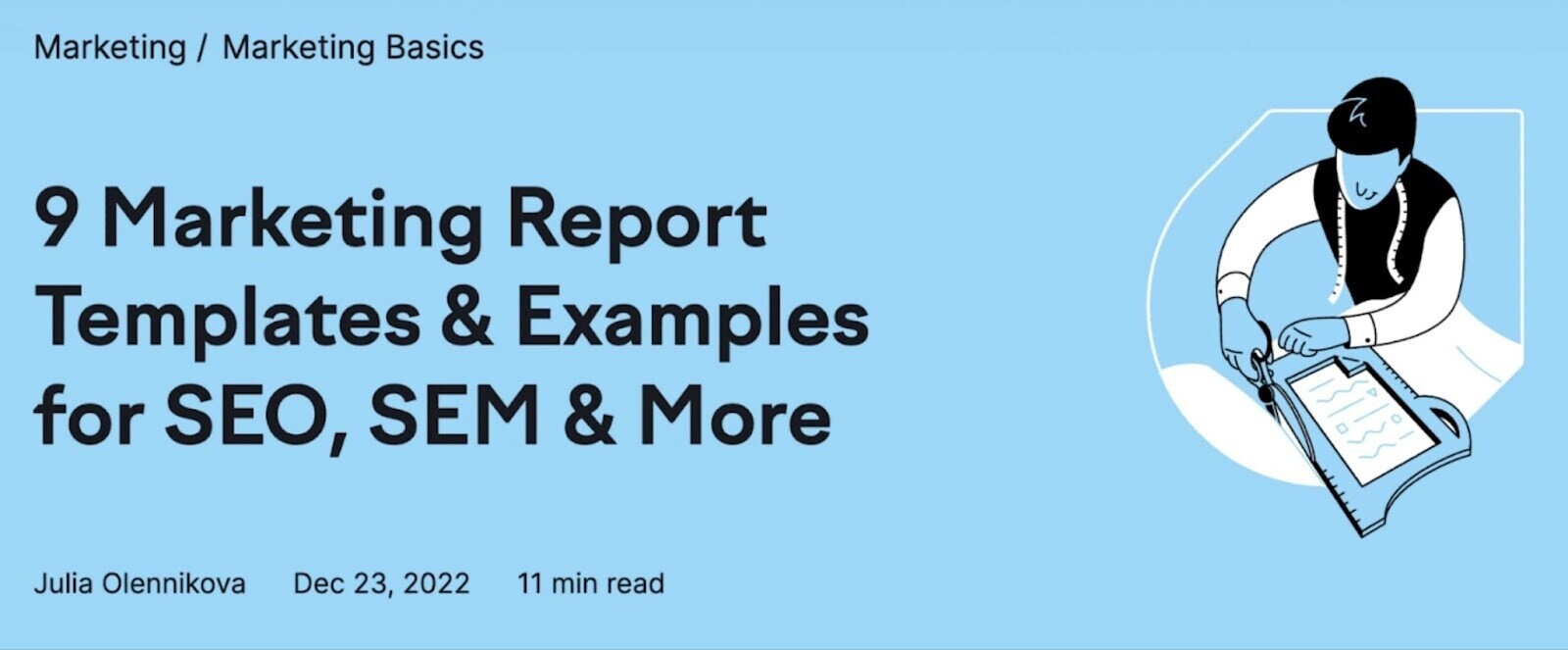
You can also offer a calculator that converts metrics (like a USD-to-Euro converter) or provides quick answers to burning questions (like a BMI calculator).
Note: The examples BMI calculator and USD-to-Euro wouldn’t actually make good link bait. Because they’re already abundant online. Your tool should be innovative, or executed better than the competition.
Similar to calculators, estimators give users quick solutions to pain points. Estimate the amount of time, money, or other resources it will take the user to accomplish something.
Create Something Useful for Publishers
Along with solving pain points for users, you can solve pain points for publishers. This happens when you provide them with content that makes their job a little easier (like giving them a citation to use). Or even strokes their ego (like including their name in a list).
Data
Publishers want a link they can use to back up a claim with hard numbers. Make a piece of content into a must-link citation by producing studies, surveys, and analyses:
For example: Top Trending Topics in 2023: What People Talk About Online

Content is more compelling and authoritative when it includes facts and figures. Giving a publisher the opportunity to replace “tons of dogs are adopted every year” with “over 2 million dogs are adopted every year” improves their piece of content. And gets you a link.
Interviews
If you publish an interview with someone, they might want to link to that interview from their own website.
This is a tactic called ego baiting. As the name implies, you’re appealing to someone’s ego. They’re proud to be spotlighted on your site. And want to share that accomplishment with their own audience by linking to your piece.
While this method can earn you a high-value link from a leading figure in your niche, it isn’t necessarily the best way to garner hundreds of links.
To maximize link-baiting potential, focus on interviewing multiple leaders on a subject.
For example: An Ecommerce Q&A: The Industry’s Best Share Their Strategies for 2022

Round-ups
Give industry leaders and helpful resources credit (credit they may return to you with a link) by creating round-ups.
You can even ramp up the ego baiting by framing your round-up as a “best of” style list. Or a list of recommendations.
For example: 13 Best Google Analytics Alternatives for 2023

Not only will sites be inclined to link to you as a way to promote themselves, but acknowledging others’ accomplishments within your industry can garner you good will.
Building relationships within your niche can lay the groundwork for even more links in the future. As you can be a go-to resource. And someone that publishers feel good linking to.
Responses
Like with interviews, response pieces won’t necessarily land you dozens of links from self-promoting websites. However, you can set your sights on multiple websites.
You can take a provocative stance on a recently published piece of content.
Or you can review other websites or tools.
For example: The 9 Best SERP Tracking Tools Reviewed

Note that this strategy isn’t likely to land you any links from a website you disagree with or review poorly. But it can garner a lot of interest from other websites and individuals who want to weigh in on a recognizable brand.
Whether people agree or disagree with your point of view, they’ll be inclined to share your argument so they themselves can respond.
Bring the Visuals
Visuals are a tried-and-true link bait technique.
People tend to respond more quickly and emotionally to visual triggers than words on a page.
This makes imagery a powerful way to capture attention, engage readers, and express information quickly.
Additionally, publishers can embed the image directly onto their page then link to you for attribution. That way, the publisher can show their users your work without sending them away from their site.
Tip: To help ensure your work is properly attributed, use a Creative Commons (CC) license. This gives others permission to share your work as long as they follow CC guidelines on use and attribution.
Infographics
Illustrate a concept with an eye-catching infographic.
For example: The Ultimate WordPress SEO Checklist
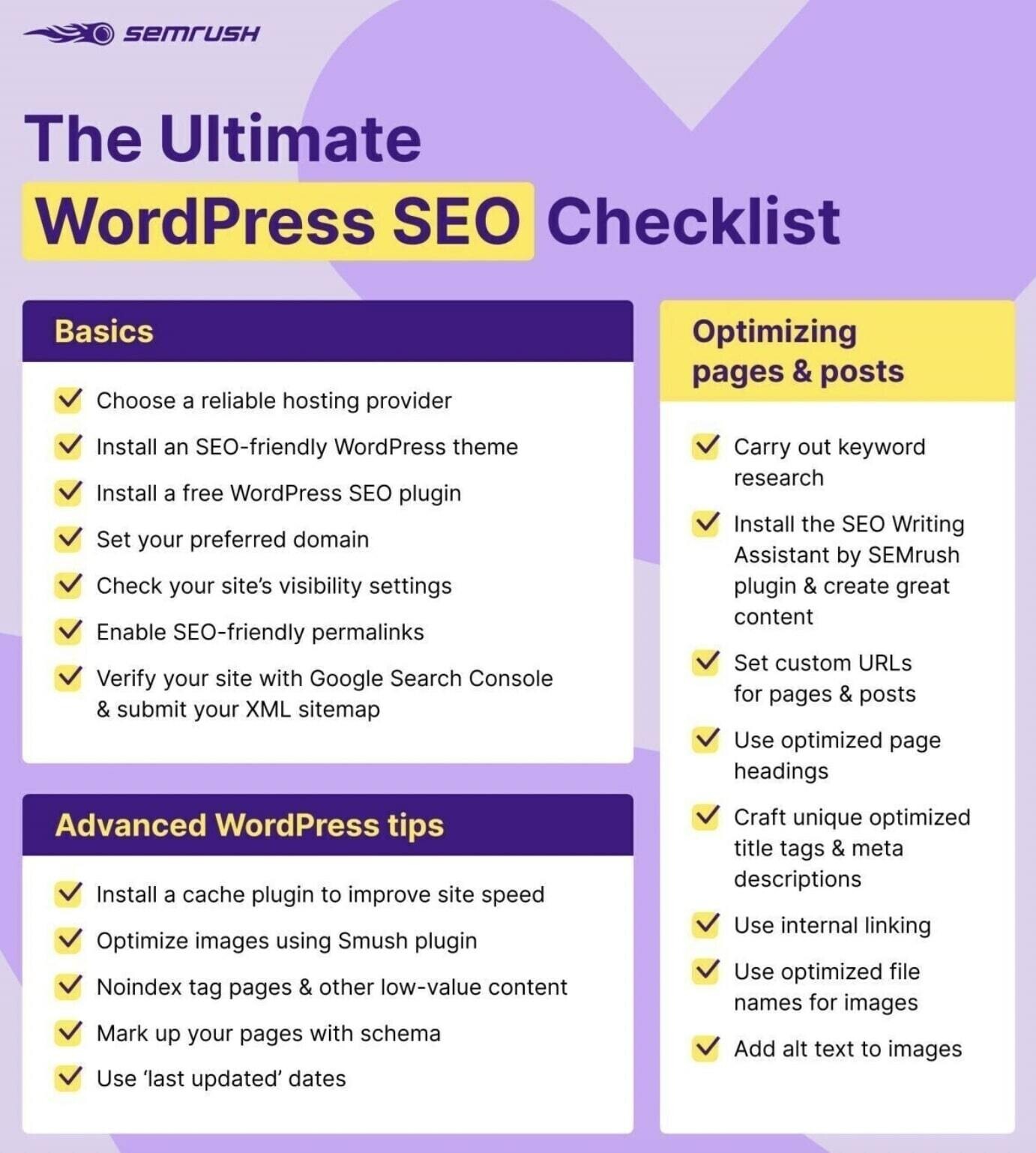
Infographics combine imagery, data, and text to tell a story or illustrate a concept.
They work particularly well when combined with an original study or survey. Take your research results and present them in a visually-appealing infographic to make your content highly shareable and linkable.
Cheat Sheets & Checklists
You can distill the information from a comprehensive guide into a visually interesting cheat sheet.
For example: Google Search Operators Cheat Sheet
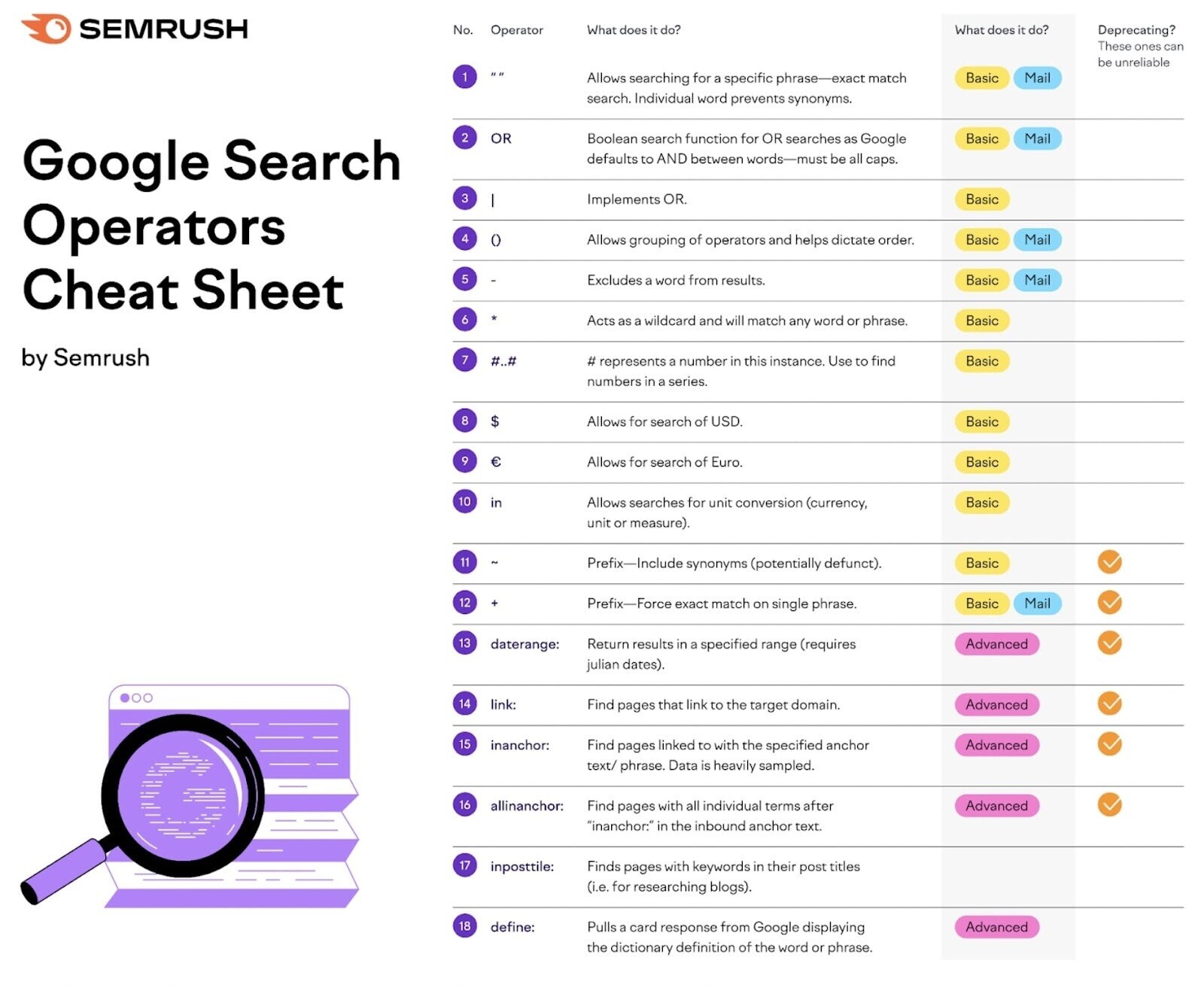
Or condense a how-to guide into an actionable checklist.
For example: The Ultimate Social Media Management Checklist
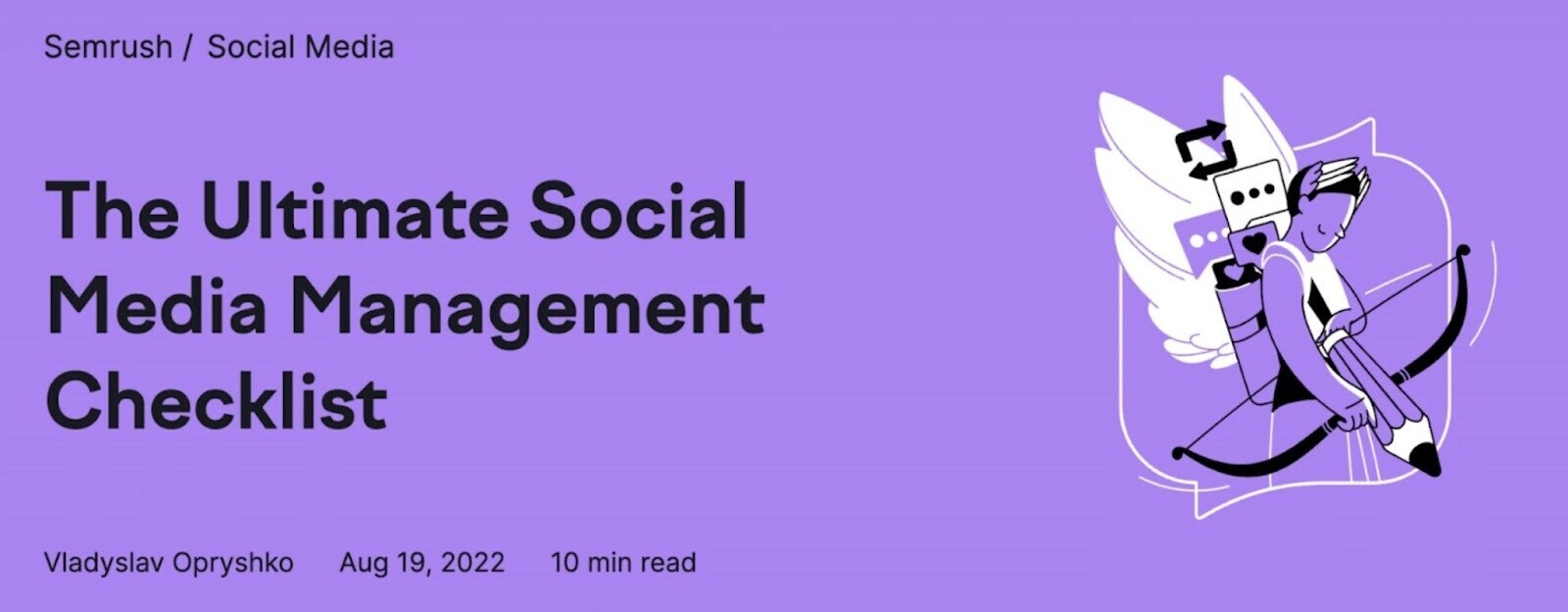
These types of content often include graphics, making them more eye-catching. And they quickly transmit information to the reader.
Not only does their snappiness make them appealing to readers, but it also helps out publishers. Like with infographics, publishers can embed the image directly onto their site without sending users away.
Even if they link out to your content, users can scan the sheet and come back to the original site. Instead of spending time reading an entire guide.
Videos
Videos have become one of the most popular online formats for consuming information. Over 25% of global internet users report watching how-to or tutorial videos each week.
With so many people wanting to learn through video, you can garner a lot of interest by presenting your knowledge in this format.
For example, you can walk users through a process with helpful visuals or animations.
Or use a talking head to explain an idea and provoke an emotional bond between the speaker and the viewer.
For a quick and easy way to get into video marketing, you can directly convert a blog post into a video using the Instant Video Creator. This tool can also translate your video into 20+ languages, giving your content more opportunities to be shared and consumed by non-English speakers.
Visualizations
Use graphics to help users grasp a concept or visualize a complex idea.
For example: How Search Engines Work
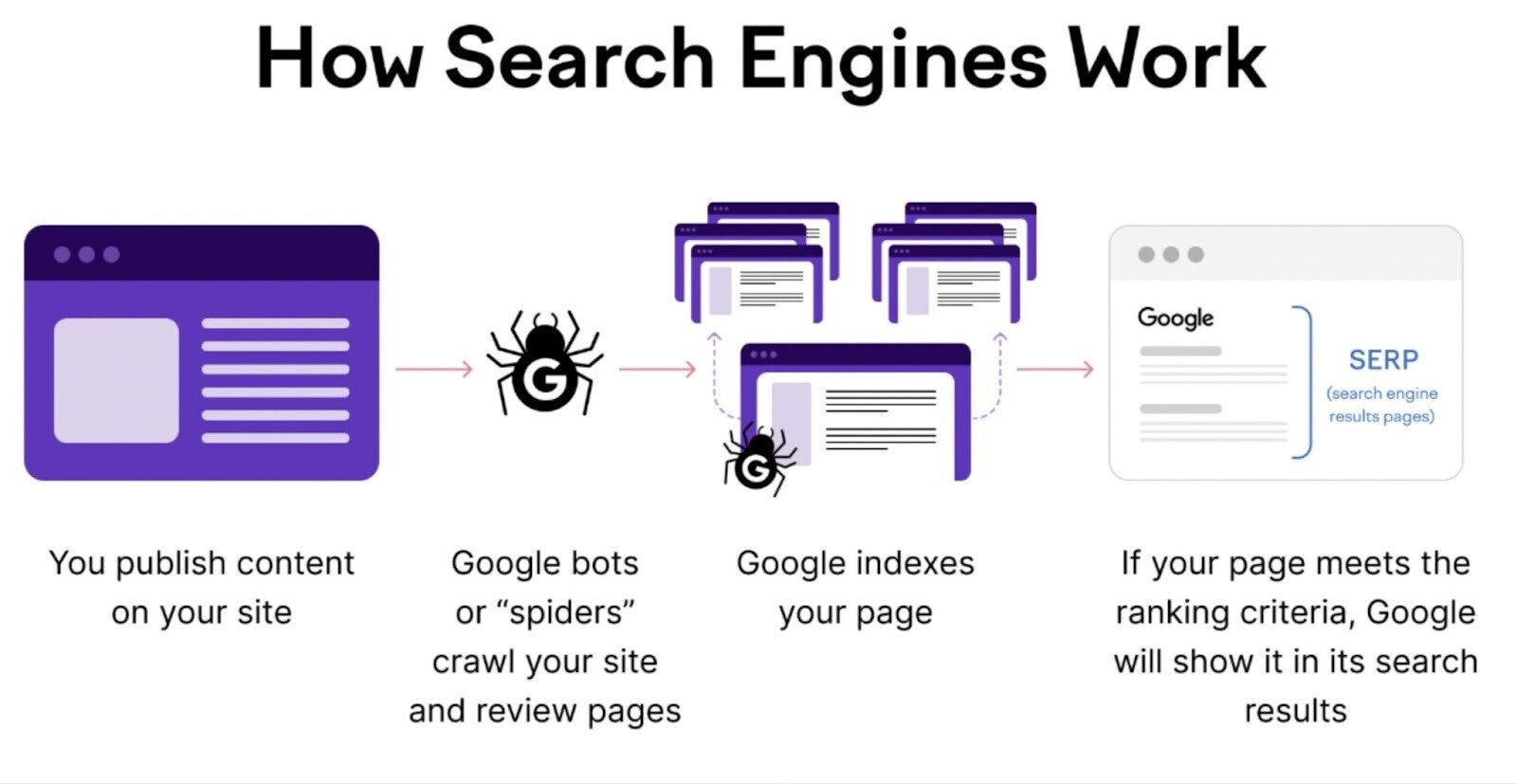
As mentioned, people process information faster (and often better) through visuals. Illustrating concepts through graphics can help communicate complex ideas and allow readers to better absorb that information.
Make It Interactive
Interactive content is one of the most effective forms of link bait. That’s because it accomplishes three things:
- It entices the user: Humans are competitive and curious. Put them to the test or offer to reveal something about them and most people can’t resist.
- It’s shareable: People **** sharing their results! This earns you social shares and brand visibility.
- It demands links: How can another website write about your unique game or quiz without linking to it? Make something that has to be seen to be understood, so publishers will link to your work.
- It gives you an edge: Many of your competitors won’t take the time to create an interactive resource. If you and another site are targeting the same keyword, but you offer a fun and engaging page, publishers are likely going to favor your site.
Here are some popular types of interactive link bait:
Games
Games are naturally engaging. They demand a user’s full attention, and can give them something in return. Like an insight about themselves.
Not to mention, games are fun!
Having fun generates positive emotions, which can translate into a positive relationship with your site.
Tests
When creating link-bait tests, you can take different approaches.
Like revealing useful information.
For example: SwiftRead’s Reading Speed Test
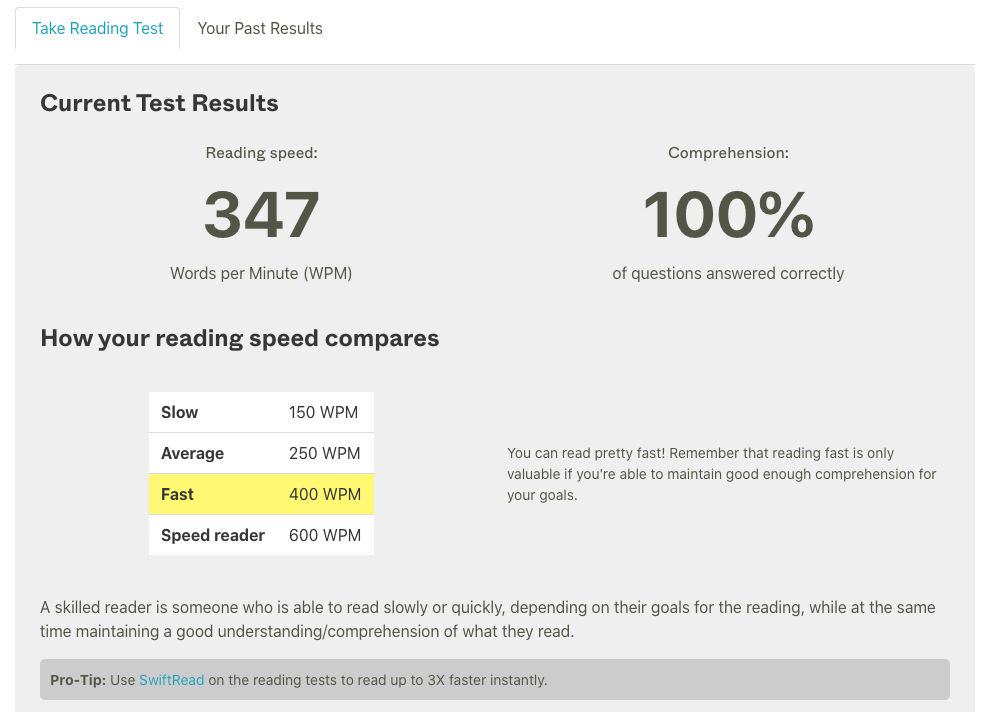
Or satisfying users’ egos by proving how much they know.
Tests are also effective in provoking competition.
For example: Buzzfeed’s General Knowledge Quiz
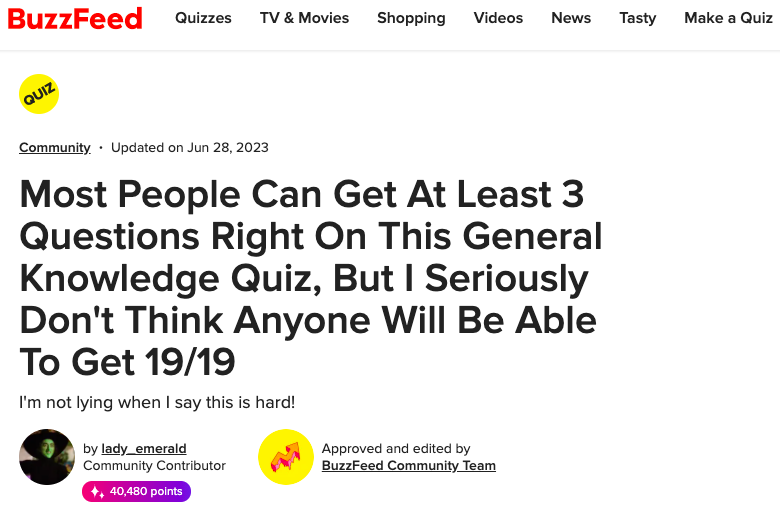
You can play into the competitive buzz by collecting data on how people score and adding it to the test. You can even take that data and create an entirely new piece of link bait just about people’s test results.
Quizzes
Like tests, link bait quizzes offer to reveal something about the user. That something might be fun, like which Disney princess you are or what animal matches your personality.
Or useful.
For example: NerdWallet’s Credit Card Recommendation Quiz
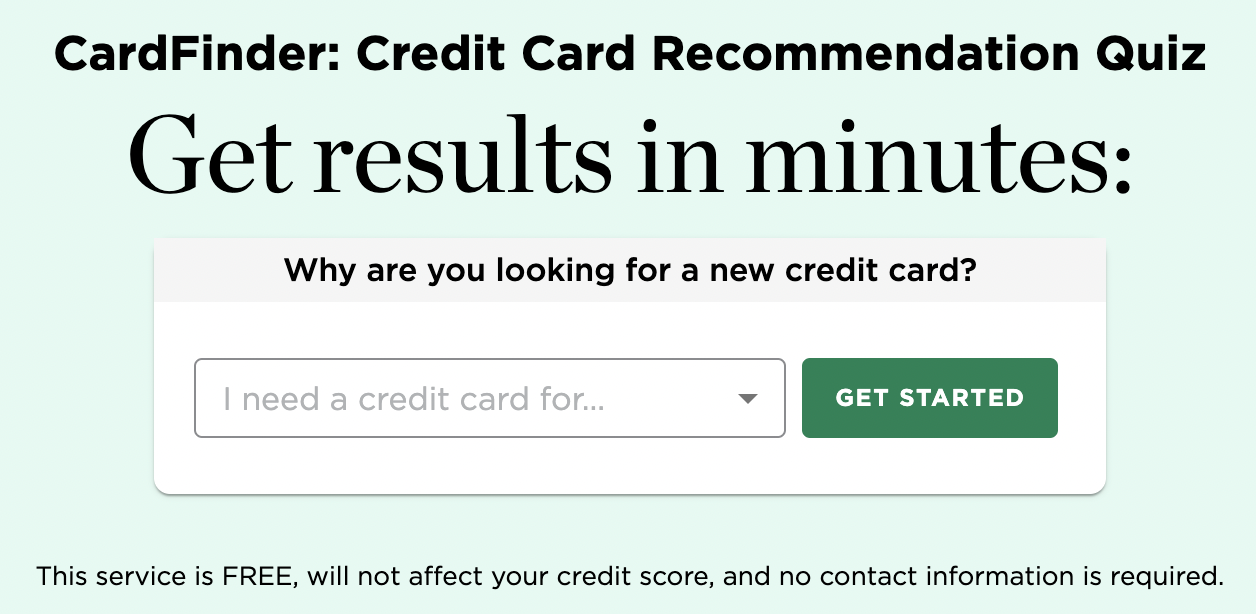
You don’t need advanced design and development skills to start offering fun quizzes. You can even build them from templates using Lead Generation Forms. This tool lets you customize lead generation forms and quizzes, then embed them directly on your site.
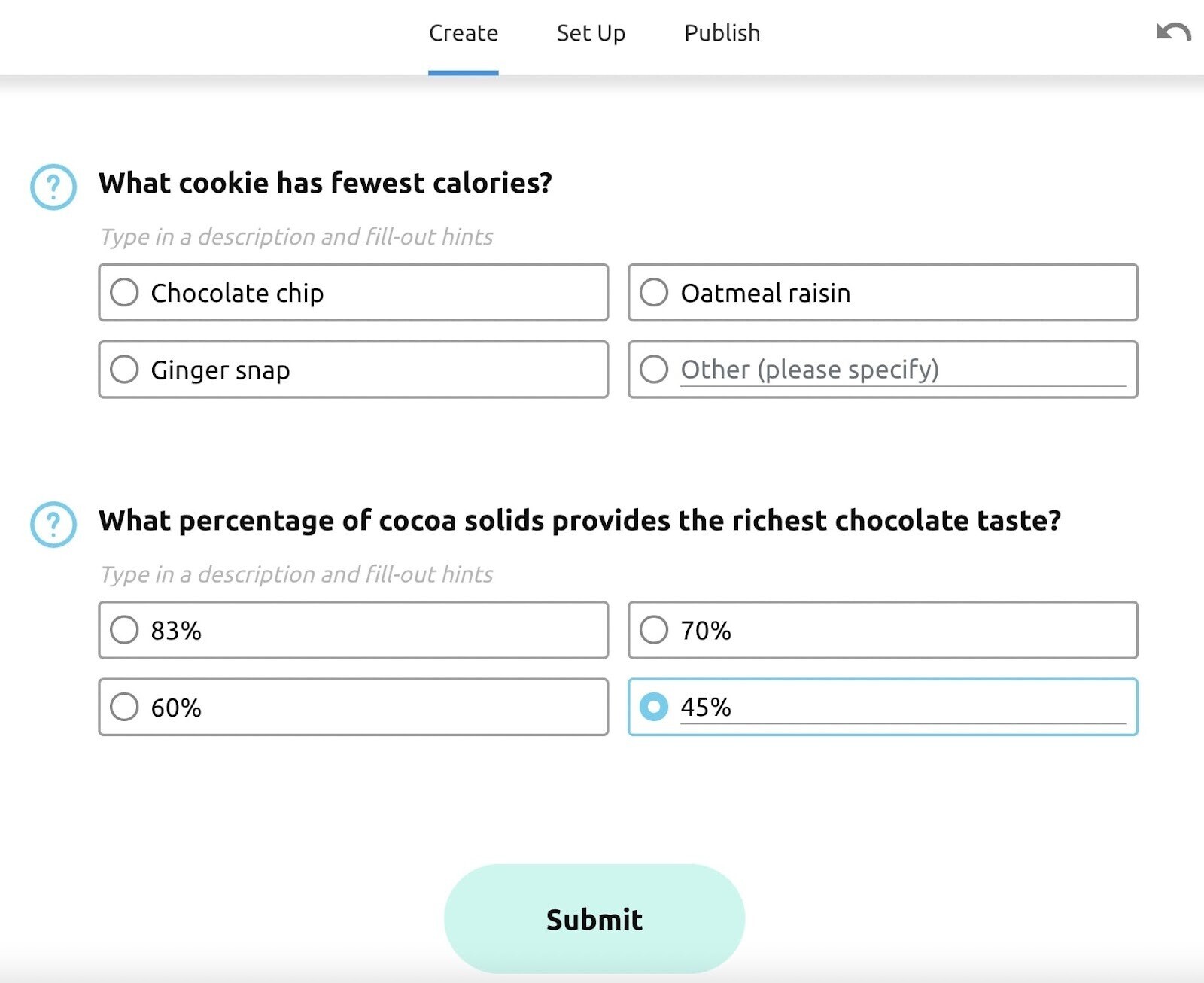
Start a Conversation
Leverage controversial topics, take a novel stance on a debate, or become a thought leader on a subject. Setting your content apart encourages conversation that users and other content creators will want to join in on.
Studies
Original studies are top-tier link bait, because they give publishers something to reference or even respond to. Especially if your research uncovers something shocking, controversial, or unconventional.
You can even conduct your own study by analyzing data you get from your site or software.
For example: Who Has the Best Backlink Database? Semrush vs. Competitors [Study]
!["Who Has the Best Backlink Database? Semrush vs. Competitors [Study]" blog title](https://static.semrush.com/blog/uploads/media/bb/1a/bb1a61d30c4a9a7c9a6a37511d195e2f/SqFt6nN0alwYrKgMdF5u3pKpGPDCiv8Wl-8w-ightnxuMvuC7caiRM-8-DnZcCzHW0Ly2J-CepvKL7ixxcpyowsgU9YwthVFBuX1jIagr1rC3Urix7D356ez2c_wGheLlXYrkHZ7hChADvl9f6XQ3_c.jpeg)
Or you can conduct your own study to uncover buzz-worthy statistics.
For example: Top Trending Topics in 2023: What People Talk About Online

Unique Arguments
Present a well-researched and unique argument to intrigue readers and give websites something to talk about.
For example: Zero-Click Searches Are on the Rise—But Marketers Shouldn’t Be Scared
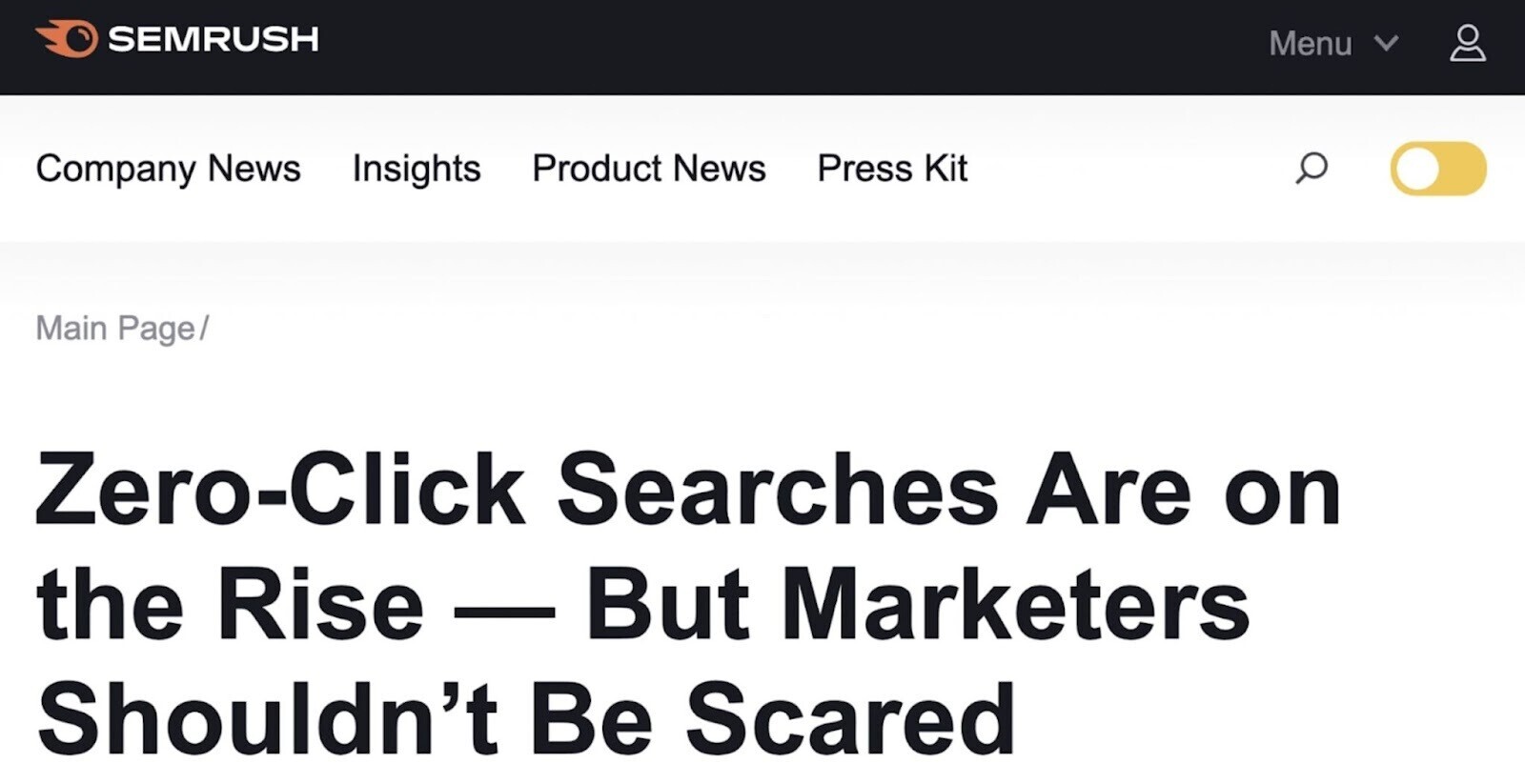
Tons of sites bait links with controversial thought pieces that take on topical news. This is a great strategy, but you’ll see diminishing returns as the news cycle moves forward.
It’s better to focus on evergreen topics that can keep your content perpetually link-worthy.
Evoke Emotions
Why does someone share a post on social media? Because it made them feel something. Tap into people’s emotions to trigger a share response.
Narratives
Using storytelling in your content makes it more emotionally engaging.
Naturally, we connect with what we understand. Making content relatable through a story can make it more shareable.
For example: How I Made $300+ In A Morning
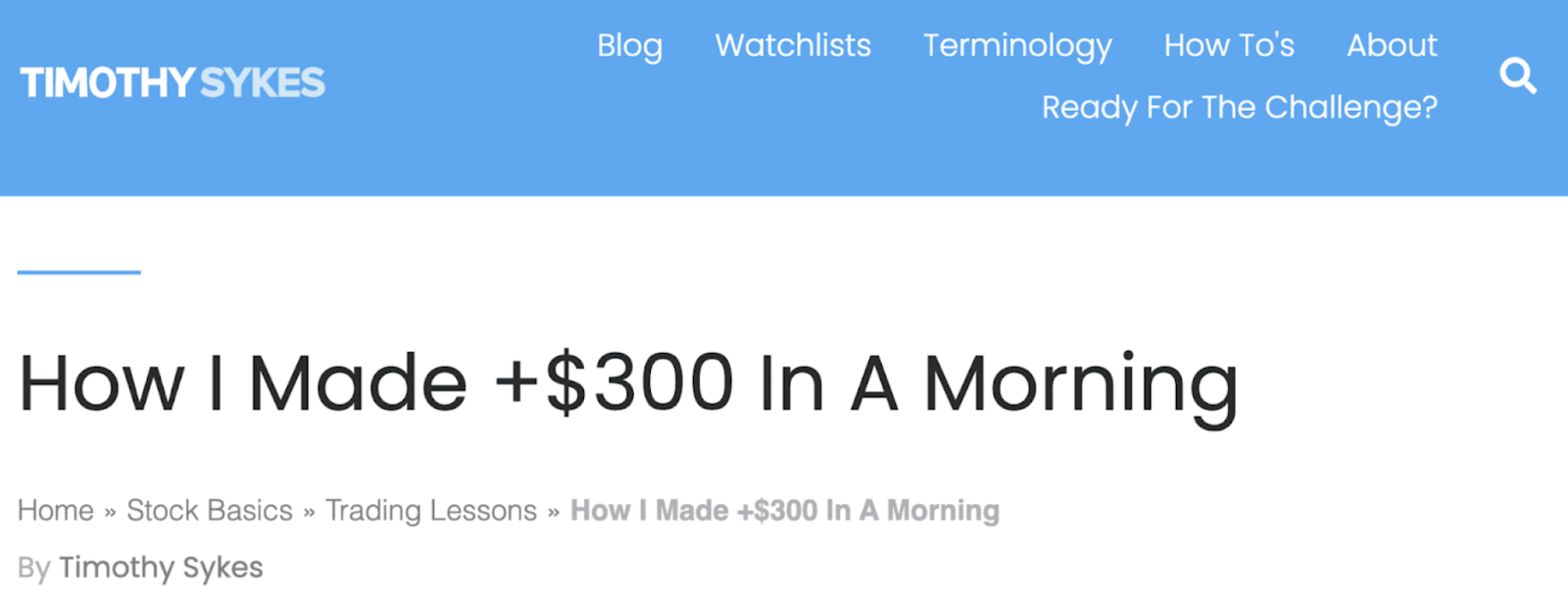
Exposés
Elicit shock by blowing the lid off a story.
Don’t worry, you don’t need a journalism degree to work this angle. Focus on reframing common misconceptions within your niche, like explaining why a commonly held belief about X industry is wrong.
Nostalgia
Nostalgia is one of the most powerful emotions. And one of the most popular marketing tools.
Publishers can use nostalgic content to forge connections with their target audience and humanize their brand.
Take Multiple Approaches
The best link bait doesn’t focus on just one of these techniques. Combine multiple approaches for limitless possibilities of share-worthy content.
Link bait is usually useful, visual, unique, and provocative. All at the same time.
Taking multiple approaches can also help you land more links simply by appealing to a wider range of publishers.
Maybe a journalist is looking for an interesting statistic to cite. Or a writer wants to add a visual aid to their latest article. Having a statistics-driven infographic can get you links from both of those publishers.
This also means your content can appeal to a wider range of users.
Some people gravitate towards how-to videos. Others want a comprehensive guide. While some may just want a cheat sheet. Offering all three on one page helps your audience. And the audiences of publishers who link to you.
Uncover Link Bait Ideas with Backlink Analytics
Having a great idea for an infographic or tool only works as link bait if it specifically appeals to your niche. A cooking blog may create a great infographic about investing, but they aren’t likely to get many links. Because people want to link to reliable sources, as a way of reinforcing their own reliability.
Not to mention, link bait is most valuable when it earns you links from high-quality websites that are relevant to your industry.
To find out what’s link-worthy in your niche, go to the Semrush Backlink Analytics tool. Enter one of your competitors’ domains and hit “Analyze.”

Click over to “Indexed Pages.”
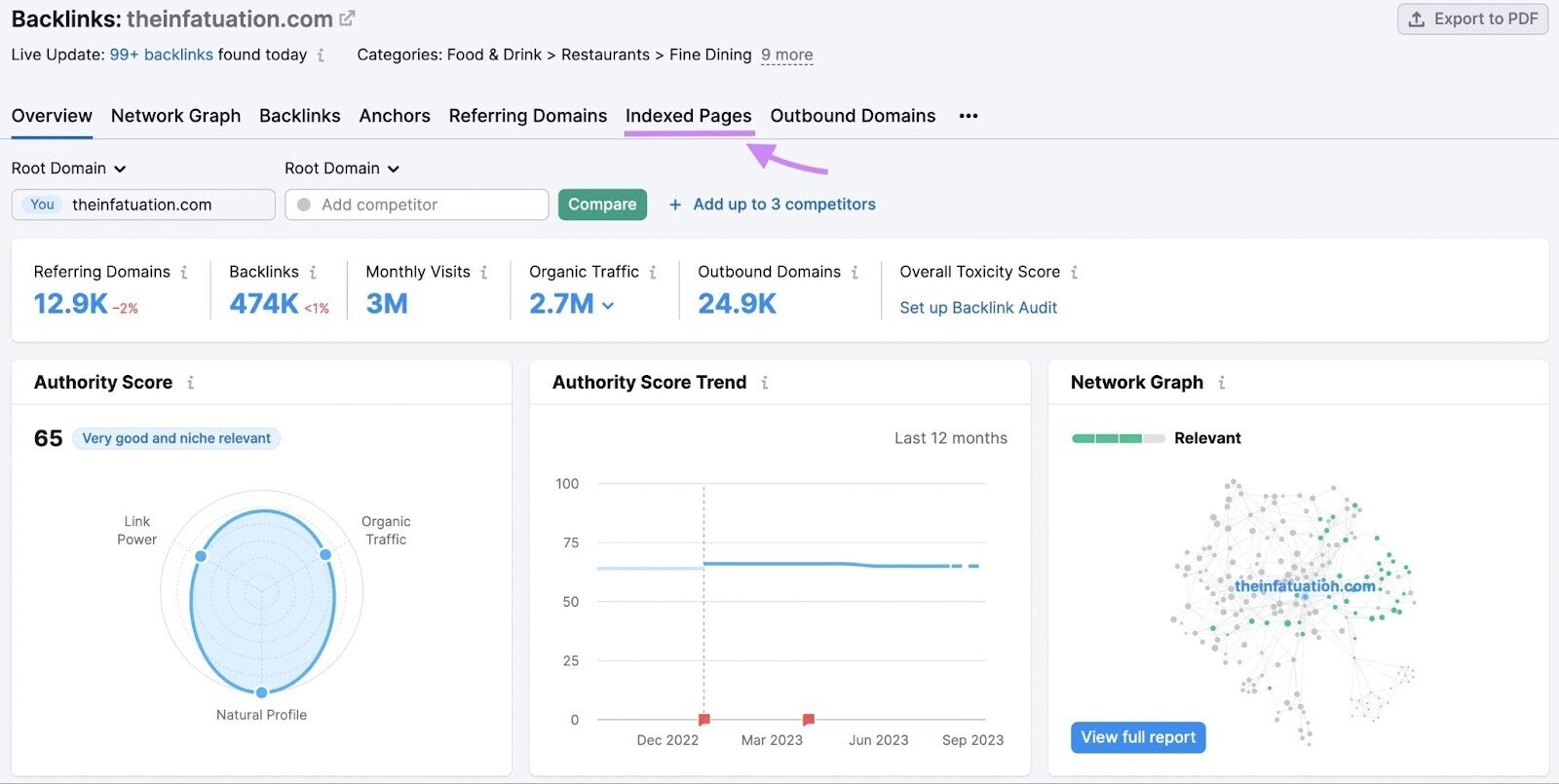
This report shows you what pieces of content on the rival’s site are getting the most backlinks. And how many domains they’re coming from.
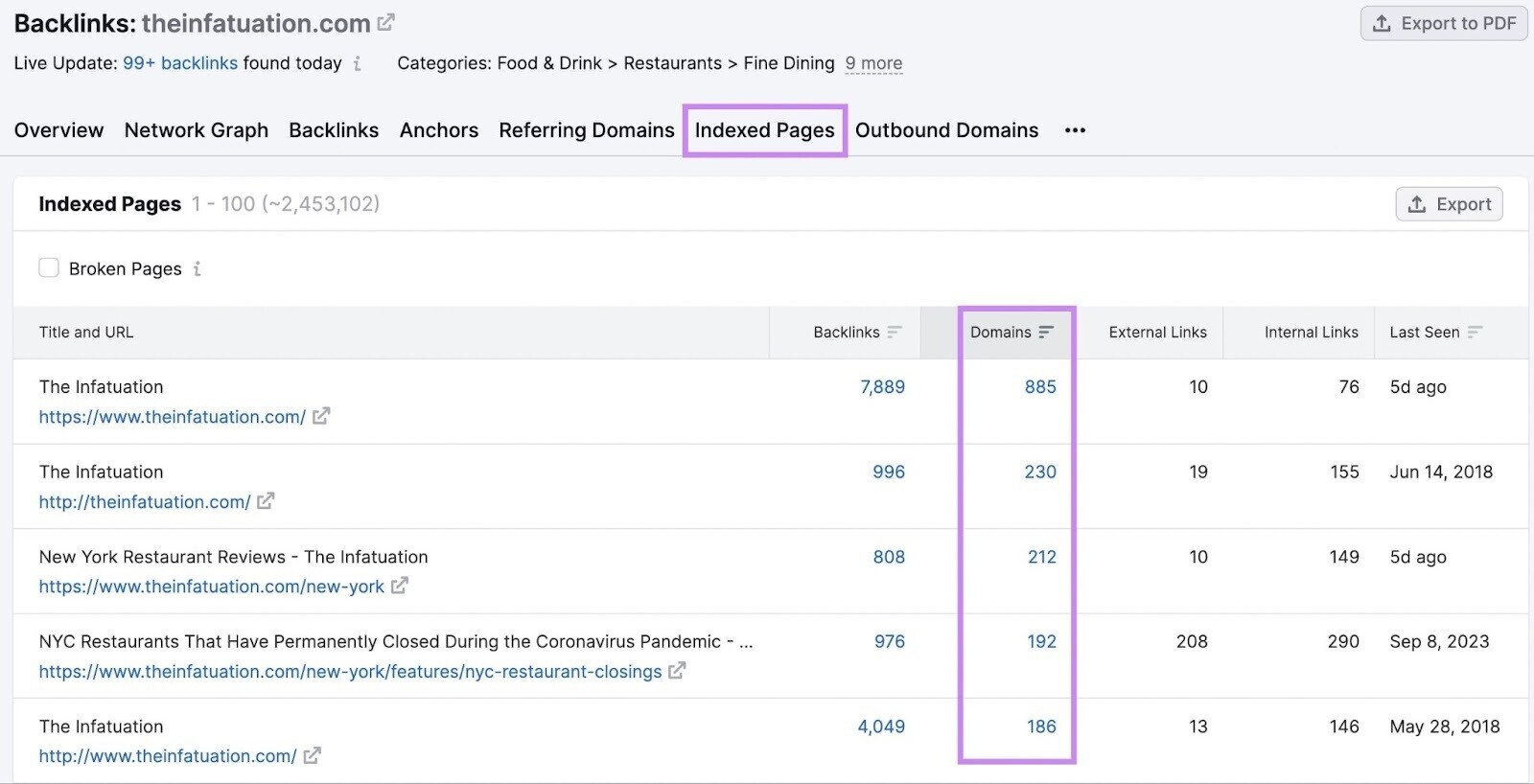
Assess which pages are bringing in the most links. What are they about? What style is the content? Is it visual, text-heavy, or interactive?
Repeat this process with multiple competitors to get a complete picture of what content is *** in your niche. Once you understand what’s attracting links, you can take a couple different approaches:
- Use the skyscraper technique to take something your competitor is doing and make it better (e.g., a more comprehensive guide, a better tool, a more customizable template). Then, reach out to domains that linked to your competitor’s content and offer your own—better—version as an alternative.
- Analyze what competitors are doing to find your own inspiration. For example, if you see visual aids are getting a lot of links, consider creating a unique infographic. Maybe you notice how-to guides are running the show. Find a subject that hasn’t been extensively covered (like a subtopic within your niche) and write the de facto guide to it.
Tip: Don’t overlook the power of good old-fashioned keyword research for finding link bait ideas. Use the Keyword Magic Tool to dig up link-worthy topics in your niche.
Find Outreach Opportunities for Your Link Bait
You can write the best piece, build the best tool, create the best asset. But it won’t matter if no one is able to discover it.
That’s why creating great link bait is only half the battle. The other half is getting noticed.
The first—and best—way to get noticed is to make your link bait visible on Google. Many publishers find sources of information by Googling. So make sure your content is optimized for its target keywords and follows SEO best practices.
On top of optimizing your content to rank on Google, you can leverage outreach. Outreach is when you proactively contact publishers, and convince them to link to your content.
A good outreach strategy doesn’t only land links, but lands the right links.
How much authority the linking website has and how relevant they are to your niche play big parts in how valuable a link from them can be.
That’s why identifying the best websites is the key to a great link-building outreach strategy.
Here’s how to do it:
Find Prospects with the Link Building Tool
Go to the Semrush Link Building tool. Enter your domain and click “Create project.”
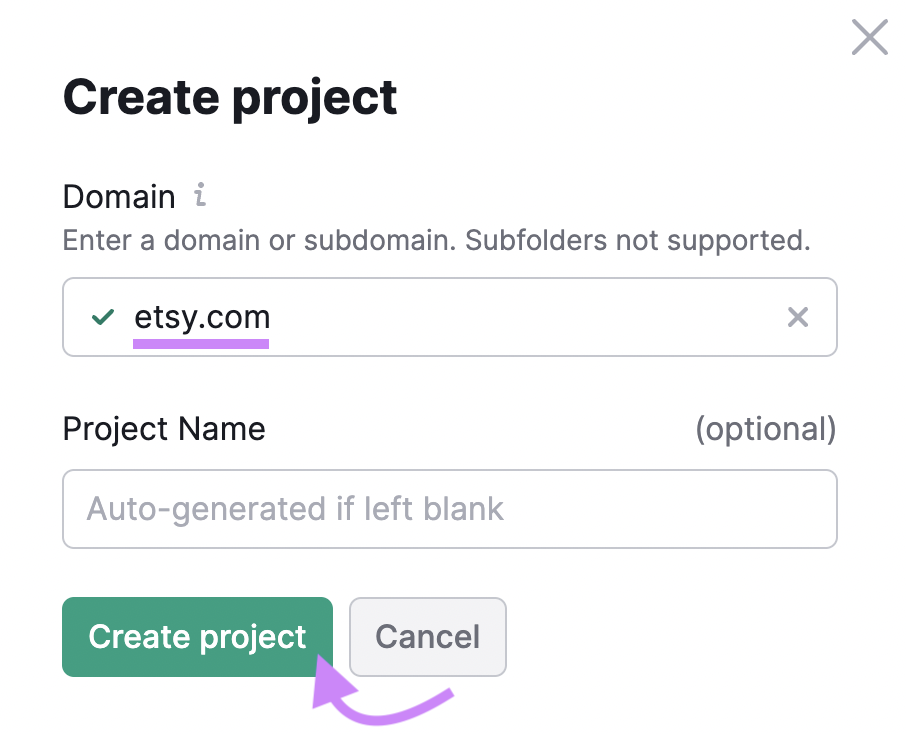
Enter your top keywords and competitors, then click “Start Link Building.”
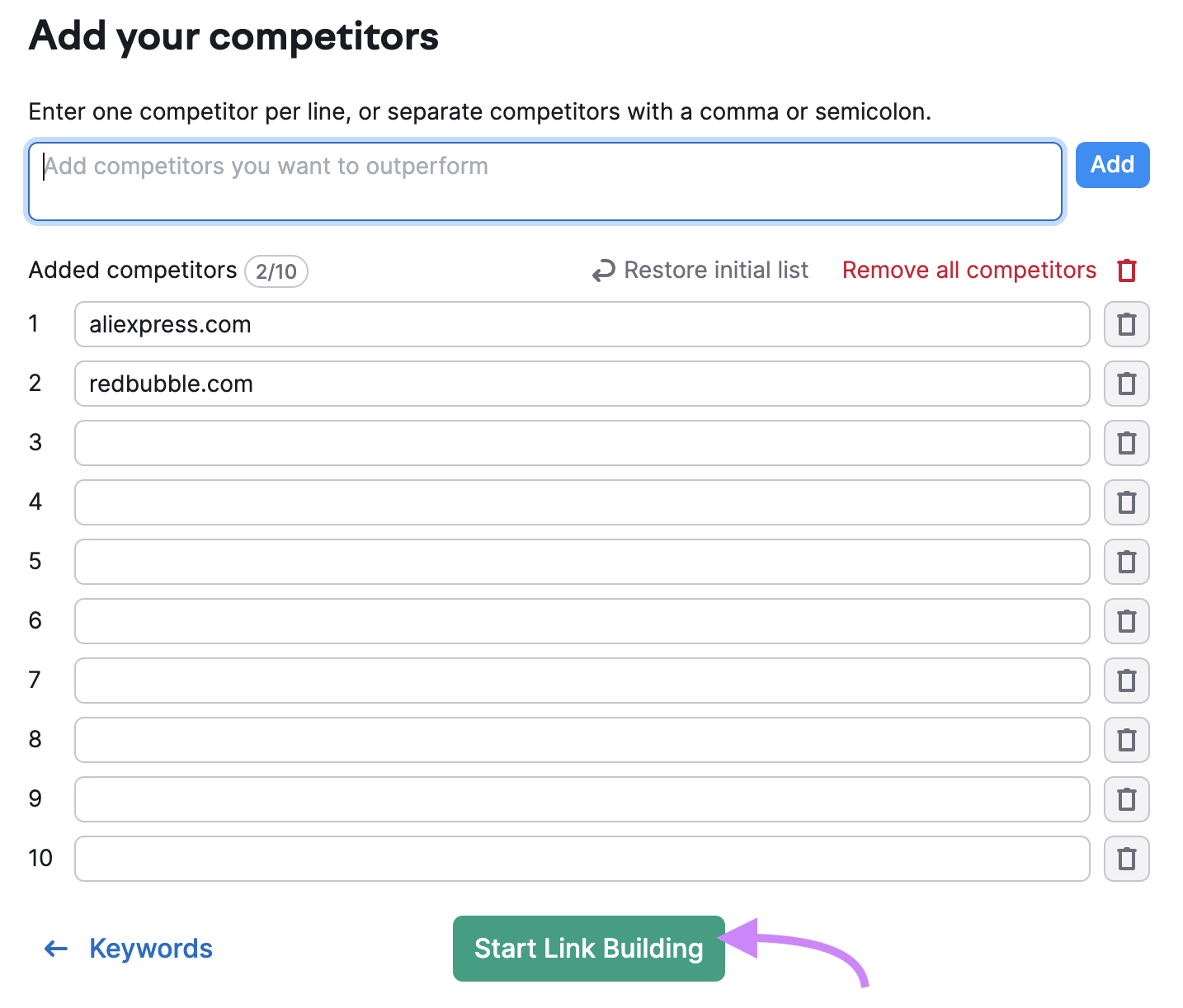
Once you’ve finished configuration, you can see an overview of your link-building prospects.
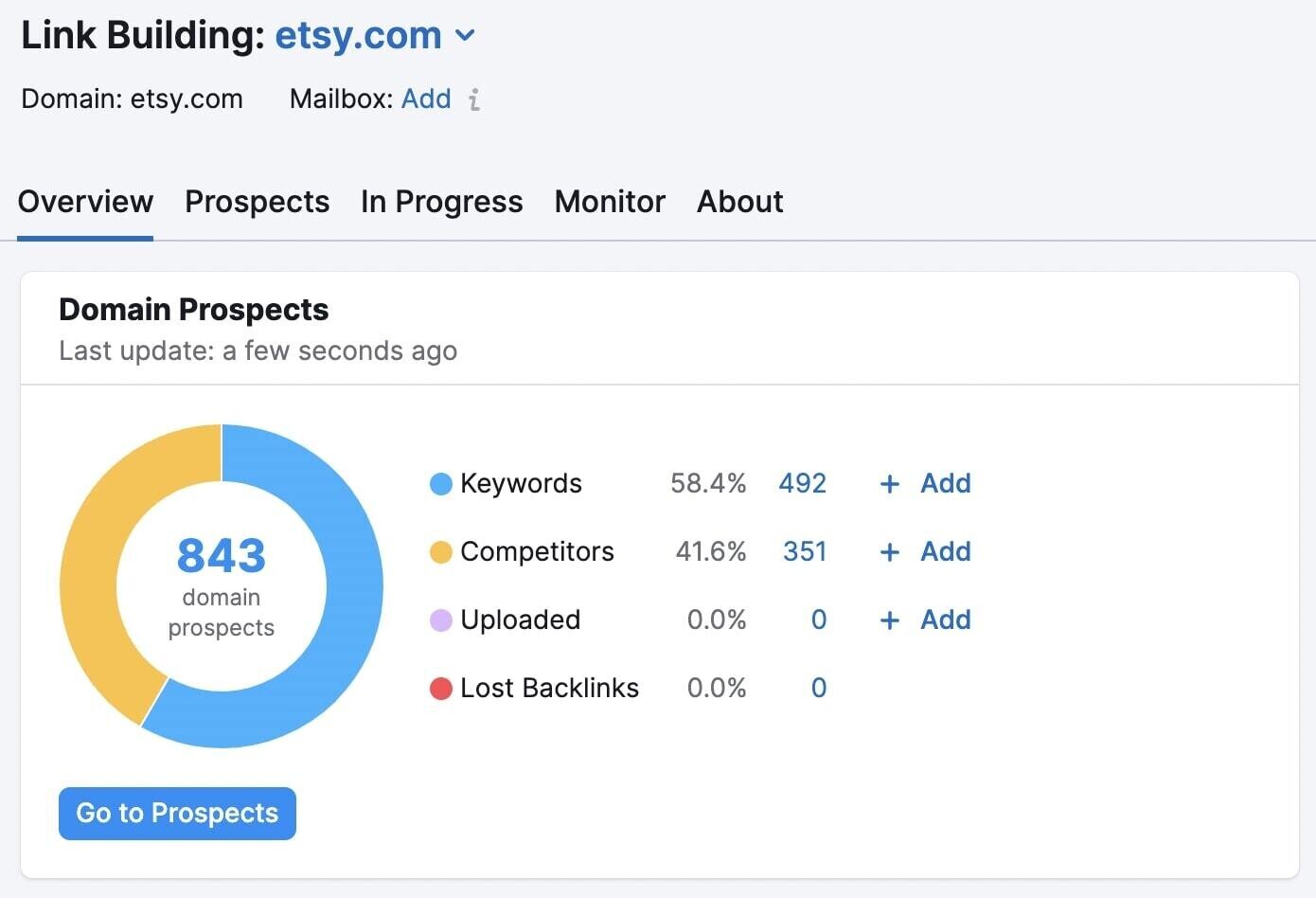
For a full list of prospective websites, go to the “Prospects” tab. Here you’ll see a list of potential targets for your link-bait outreach campaign. You’ll see different metrics for each site, like URL Type, Authority Score, and Rating.
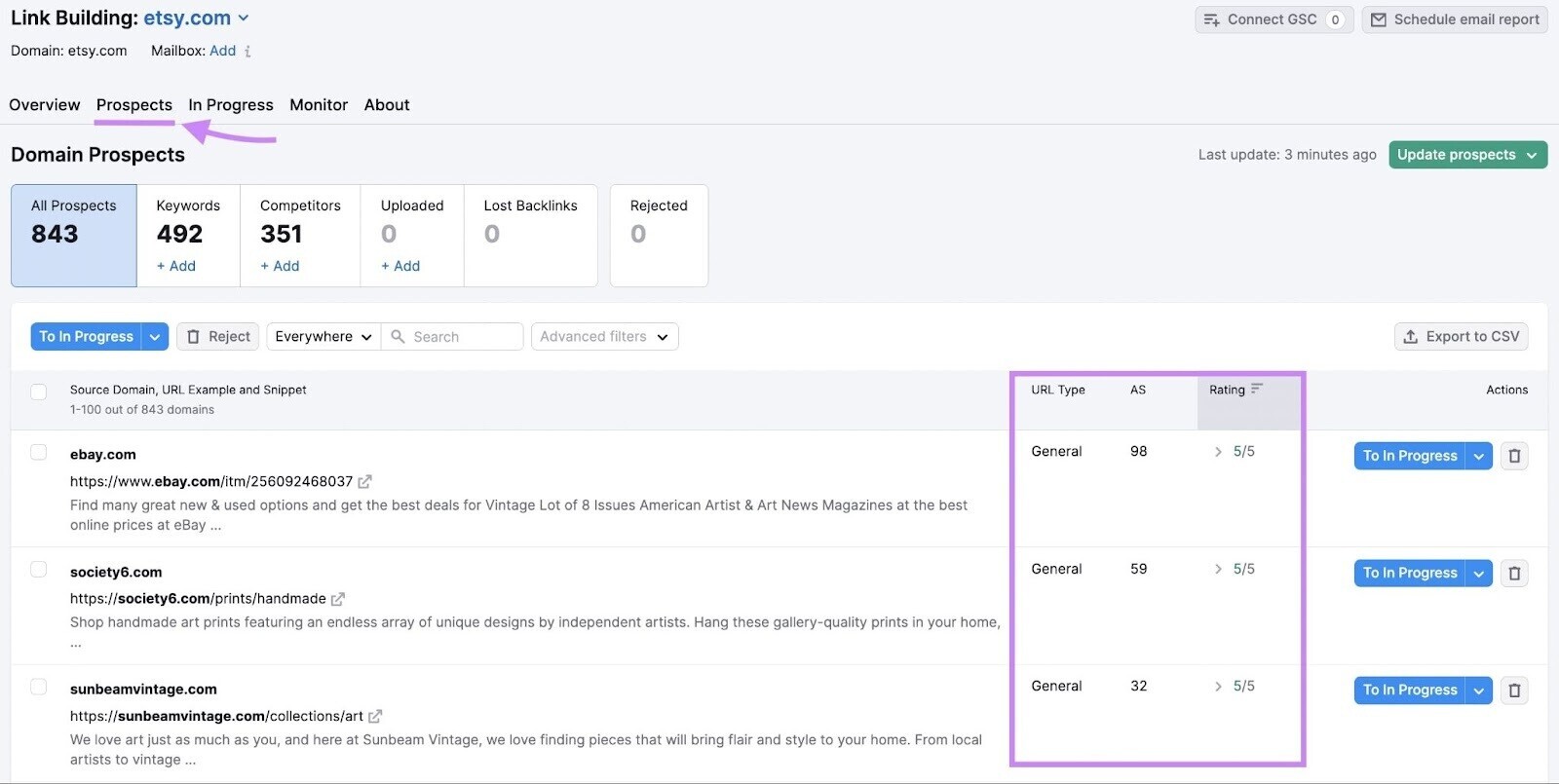
URL Type helps you understand what kind of website it is. For example, whether it’s a blog, forum, or news site.
Authority Score (AS) a Semrush metric that measures a site’s reputability.
Rating refers to how valuable a link from this site is.
When you’ve identified a good prospect, click “To In Progress” to add it to your In Progress list.
When you’re ready to reach out to saved prospects, go to the “In Progress” tab. Here, you can find websites’ contact information. Then, compose, send, and track outreach emails pitching your link bait.
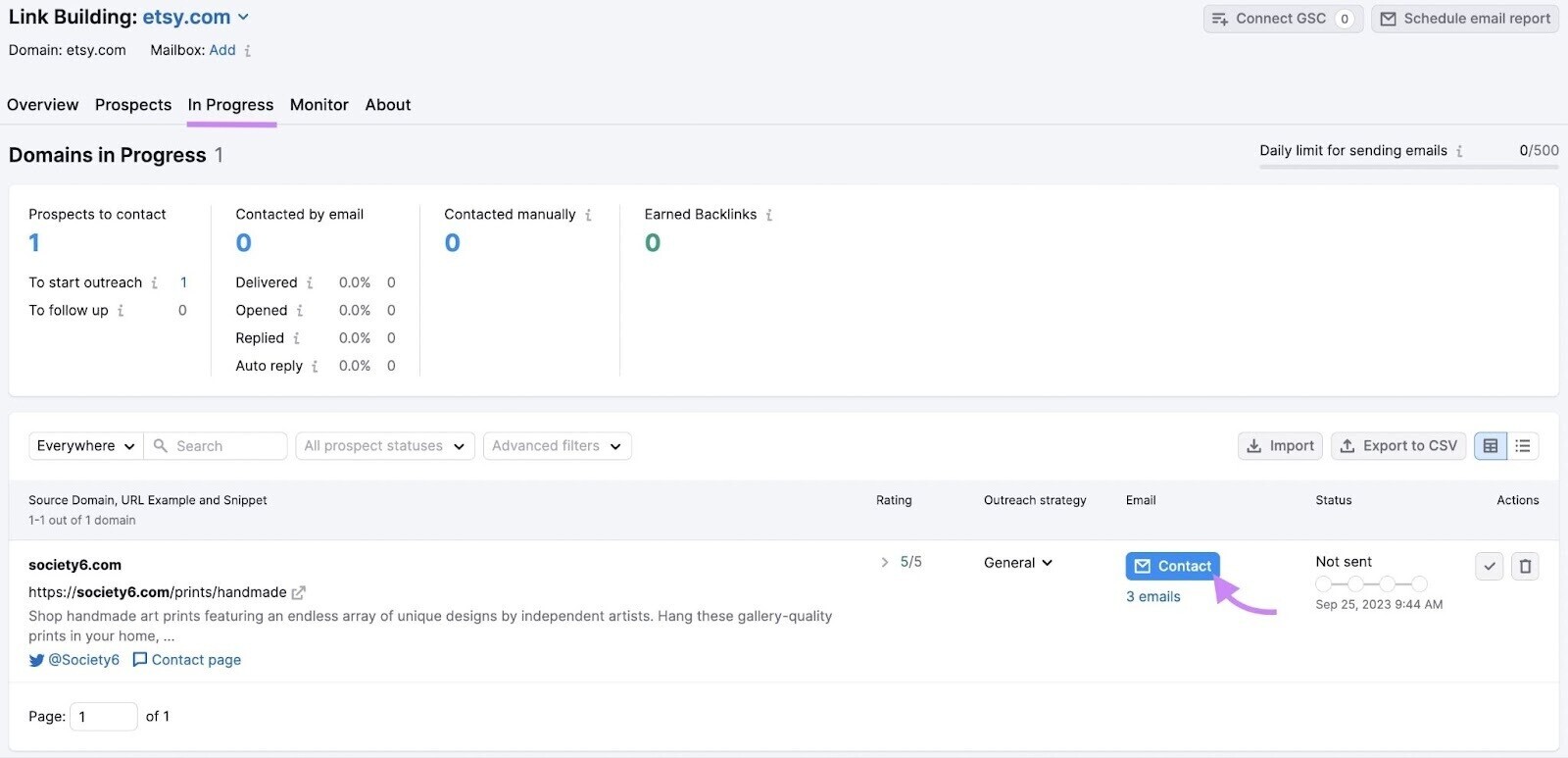
See Who’s Linking to Competing Content
You can also see who’s linking to content similar to your piece of link bait. You’ll first need to identify a piece of content like your own.
Go to the Semrush Backlink Analytics tool. Enter the competing content’s URL and click “Analyze.”

Go to the “Referring Domains” tab.

Scroll down to find a full report of which domains are linking to your competitor’s piece of content.
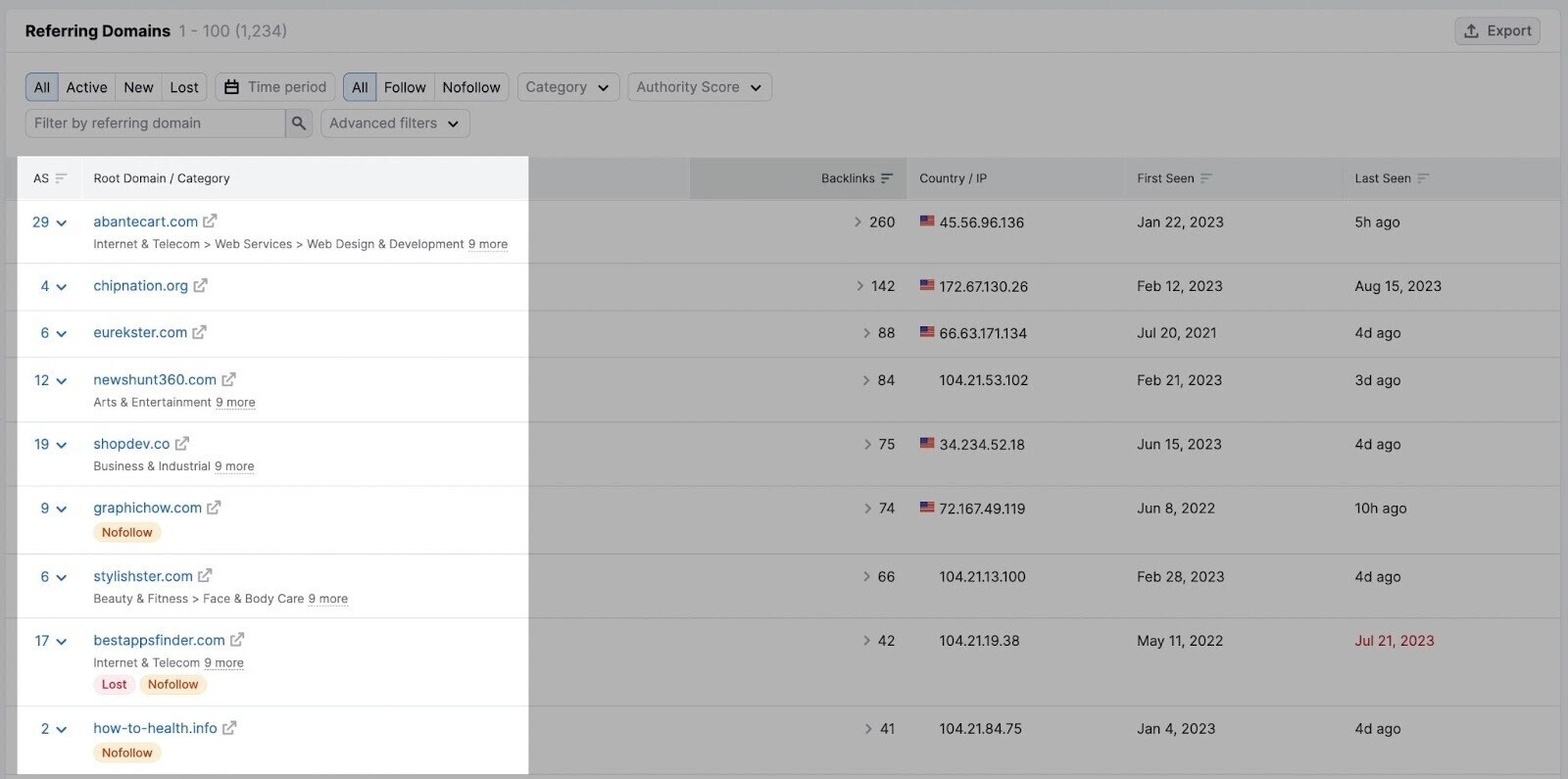
Export this report for a quick list of potential outreach opportunities.
Identify Gaps in Your Backlink Portfolio
Another option is to find websites that link to competitors but not to you.
Go to the Semrush Backlink Gap tool. Enter your domain URL and up to four competitors’ domain URLs, then hit “Find prospects.”
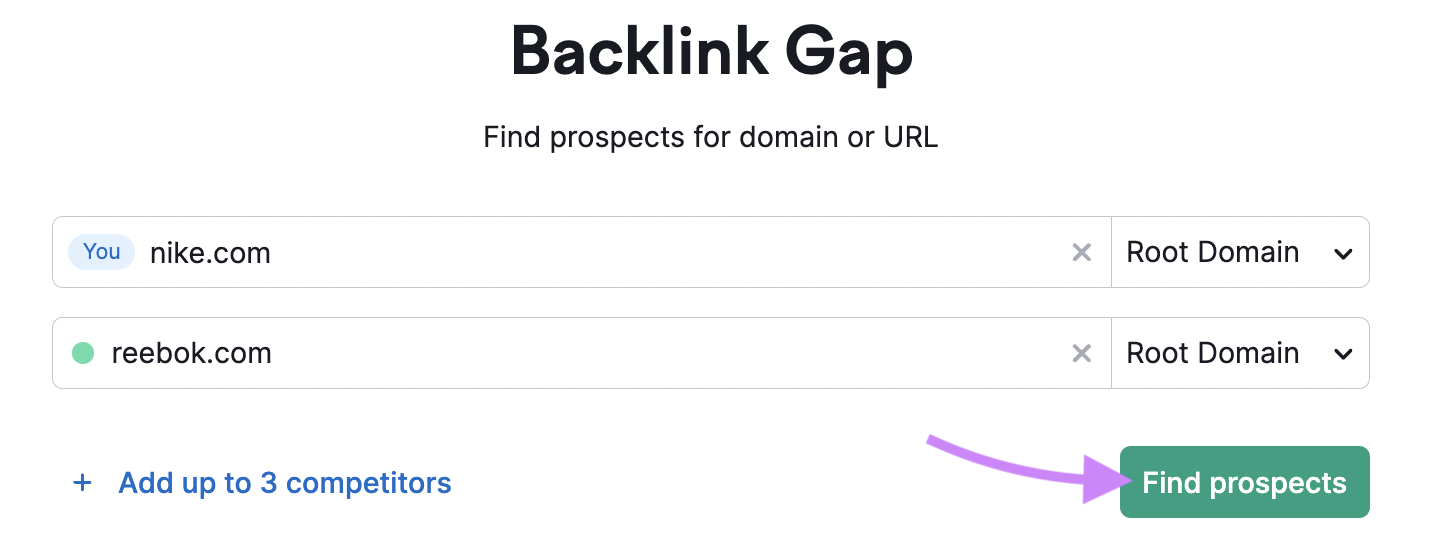
This generates a report that shows who’s linking to your competitors but not to you.
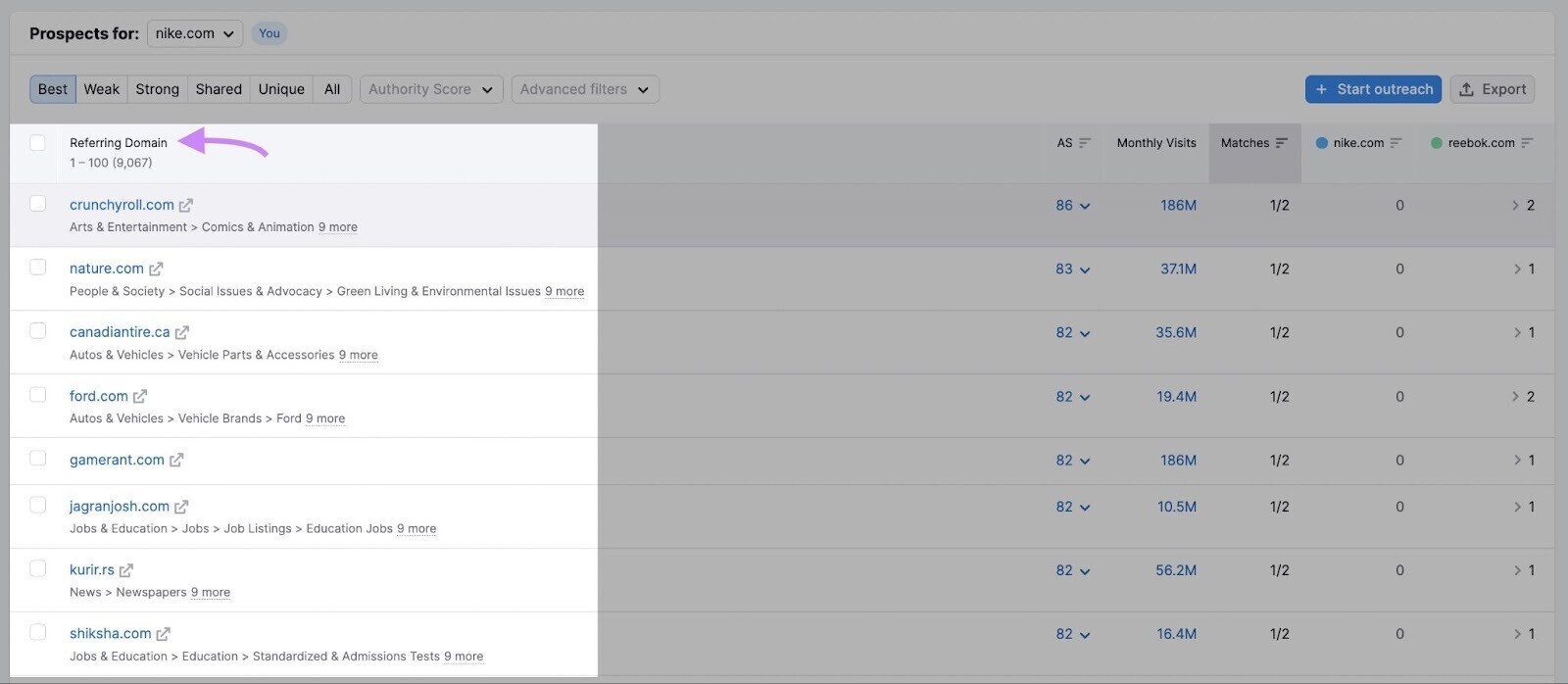
It’s beneficial to get links from sites that haven’t yet linked to you. Especially if they operate within or adjacent to your niche.
Seeing that they have linked to competitors is a good indication that there’s some overlap in your audiences. And that they have a proven track record of linking to content like yours.
Plus, replicating your competitors’ links helps stop them from getting a competitive edge over you.
Even if a site is linking to one or more competitors, check out their site to make sure your content is the right fit. Don’t waste your outreach efforts on a website that ultimately won’t be interested in what you have to offer.
Don’t Let Your Link Baiting Efforts Go to Waste
Track the progress of your link bait campaigns to truly see what works and what doesn’t.
Some key metrics to track include:
- Backlink growth
- Referral traffic
You can track these in Google Analytics as well as the Semrush Backlink Audit.
To start using the tool, follow steps for configuration, then click “Start Backlink Audit.”
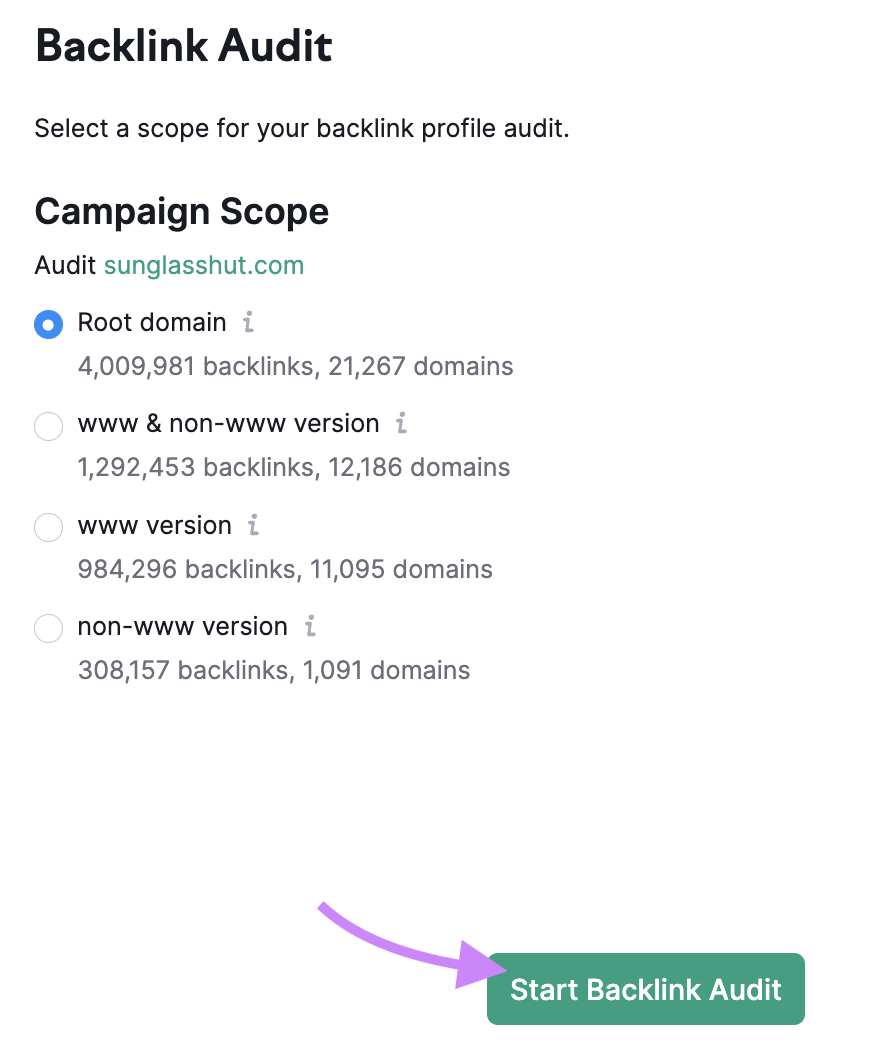
When the audit is complete, you’ll get a report that includes referring domains (who’s linking to you) and what backlinks your site has gotten.

If you switch over to the “Audit” tab, you can see a comprehensive breakdown of your backlinks. Including the URLs linking to you, what anchor text they use, and what page they link.
Here, you’ll also find the referring domain’s Authority Score and Toxicity Score. These are Semrush metrics that measure a site’s reputability and quality.
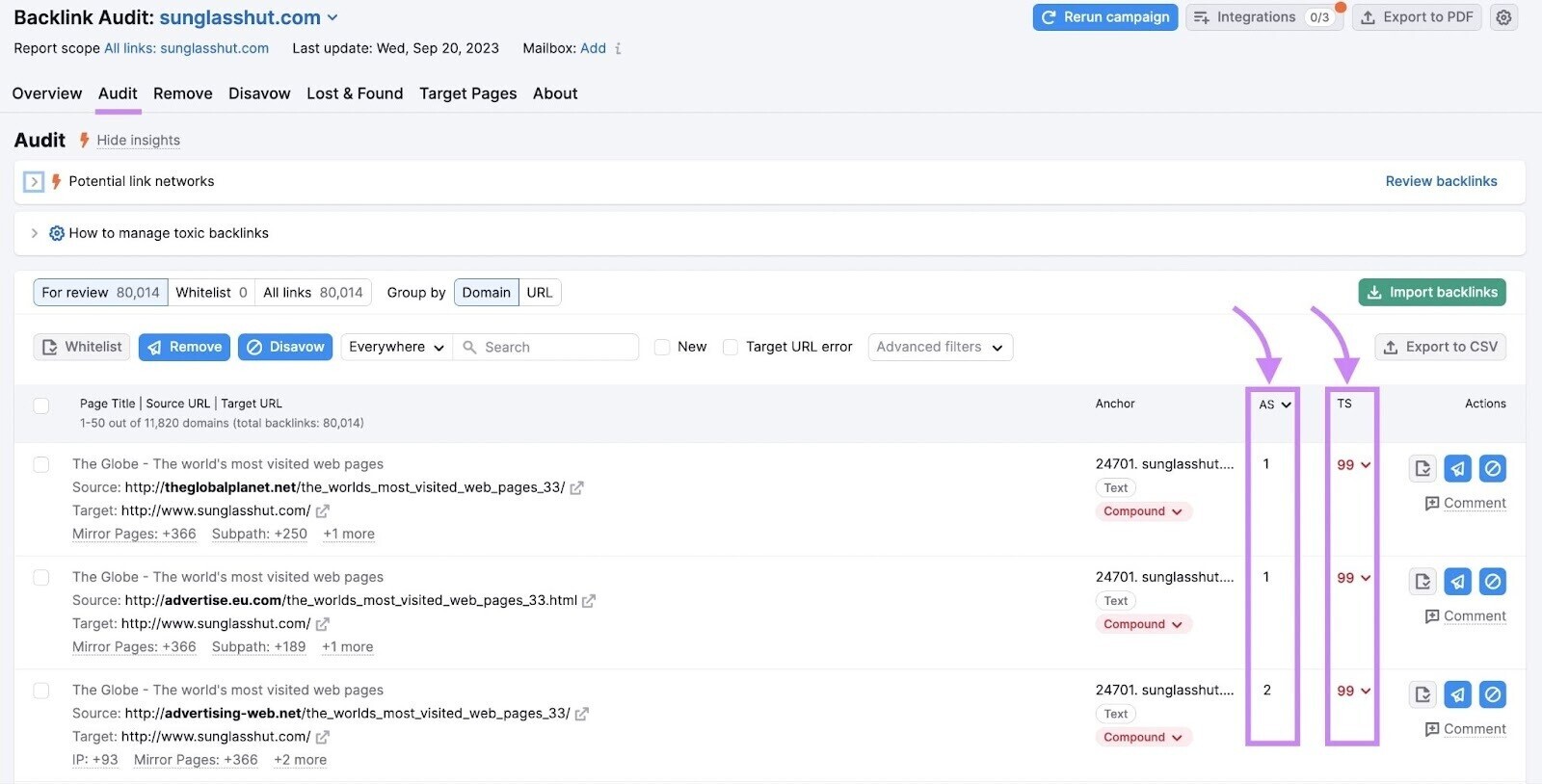
This helps you understand what content is attracting high-quality versus low-quality links.
Use this information to double-down on content types and outreach strategies that are working in your favor. And continue to build relationships with authority websites in your niche.
Note: You can also use the tool to clean up your backlink profile if you have a high Toxicity Score.
Use the tool with Google Search Console and Google Analytics to get even more insights into which pages are attracting links. By constantly analyzing your strategy—replicating what works and changing what doesn’t—link baiting can continually raise your site’s authority and increase your traffic.
Source link : Semrush.com
